

Visit Castile and Leon
Castile and Leon is a huge region with a truly remarkable architectural heritage. Visit its many castles, monasteries, cathedrals and historic towns.
Castile and Leon tourist sites and places to visit
For a summary of the most popular sites in the region see also Castile and Leon places to visit .

The Castile and Leon region is in the north-west of Spain, just south of Asturias and Cantabria, and Galicia. Valladolid serves as the regional capital.
Castile and Leon are united to form Spain's biggest region. This region (known in Spain as Castilla y Leon) was the driving force of the Reconquest and its leaders brought great wealth to the region. If you are looking for monuments, art treasures and historic sights this is the region to choose. Salamanca and Leon are particular highlights and rank amongst the most beautiful cities of Spain
This region is much too big and contains too many sights to cram into a two week holiday and so here is an introduction to each of the nine provinces with suggestions and highlights to enable you to get the most from a visit to this remarkable region.
Leon - North West Castile and Leon
The Picos de Europa mountains and the beautiful cities of Leon and Astorga will delight visitors to the Leon province.

Be sure to visit Leon , famous for its gothic cathedral and home also to the Basilica of San Isidoro and San Marcus Convent, now a luxury Parador. Another highlight is Astorga with its multi-turreted Bishop's palace designed by Gaudi. Astorga is considered to be one of Spain's most beautiful towns. West of these is Ponferrada with its Templar castle and iron bridge.
Continue west to Las Medulas, a small town overlooking some truly breathtaking rocky countryside. Carucedo is another good place from which to explore this great scenery. The dramatic rocky scenery was shaped into its current state by mining in Roman times and this area is now a UNESCO World Heritage Site.
Anyone planning to do the 'Pilgrim's Way' will pass through the attractive town of Villafranca del Bierzo, which is worth visiting even if you are not doing the pilgrim walk.
Another highlight is Castrillo de Polvazares which is one of Spain's most beautiful villages and home to a castle! Penalba de Santiago is another "most beautiful village".
Palencia - Northern Castile and Leon
With the highest concentration of Romanesque art in the whole of Europe there is plenty to discover. Walkers may want to discover this as part of the "Way of Saint James" pilgrim route which crosses the province.
The towns of Fromista, Poblacion de Campos, Villalcazar de Sirga and Carrion de los Condes are all on the pilgrim route. Before the Reconquest Carrion de los Condes had to hand over a hundred virgins each year to Moorish lords!
Romanesque art can be found in the pretty town of Aguilar de Campoo, in the north of the province. The monastery is particularly impressive. Nearby in a beautiful location, surrounded by mountains, is Cervera de Pisuerga with many monuments to see.
The provincial capital of Palencia has many treasures of its own. It was an important town in the Middle Ages and is home to Spain's first ever university.
Near to Palencia are the lovely towns of Ampudia and Duenas both of which have the 'Property of Cultural Interest' classification.
If you wish to explore the Palencine mountains then head for the pretty village of Cervera de Pisuerga.
Burgos - North Eastern Castile and Leon
The magnificent Burgos cathedral and the Archeological Site of Atapuerca are two highlights of the Burgos province.

Burgos cathedral is the only cathedral in Spain which has UNESCO World Heritage Status in its own right and should not be missed. The town features many other treasures making it well worth the trip.
Close to the city of Burgos is Atapuerca which is a hugely important prehistoric archaelogical site which has traces of human activity from 1 million years ago through to the present time. It too is a UNESCO World Heritage site.
In the north of Burgos visit Medinal de Pomar and explore its attractive medieval streets and 14th century castle.
South of Burgos, Covarrubias is a pretty town with typical Castilian architecture, arcaded streets and medieval walls; Lerma has an impressive historic quarter with lots of grand buildings due to the first Duke of Lerma spending his ill-gotten gains! Aranda de Duero also has some fine 15th century buildings.
One of the most beautiful towns in the province is Penaranda de Duero with its castle and medieval centre and a lovely Renaissance palace. Polvazares is one of Spain's most beautiful villages and has some unique architecture and a castle.
Another highlight is Benavente whose 16th century castle is now a luxury parador. Toro is another fine town.
Zamora - Central Castile-Leon
Spectacular mountains, Romanesque art and the Easter Week celebrations are highlights of the Zamora province.

For mountain scenery visit the Lago de Sanabria nature reserve, or head to the Portugese border to the Fermoselle in the Arribes del Duero Natural Park - home to the largest population of wolves in Europe.
The provincial capital of Zamora has a lovely cathedral and a number of fine Romanesque churches. Its Easter Week celebrations are some of the best in Spain. The Romanesque churches of Zamora are home to a colony of storks.
Very popular in the province is Puebla de Sanabria which not only has a castle, many fine buildings and great views but it also sits on the edge of a glacial lake, Lake Sanabria and the Lake Sanabria Natural Park.
Valladolid - Central Castile and Leon
If you like castles this is the region to head for with more than 30 in Valladolid province.

Some spectacular castles to visit in the region include Penafiel castle, Iscar castle, Simancas Castle and the huge Gothic-Mudejar style Castillo de la Mota castle at Medina del Campo . As well as its battleship-shaped castle Penafiel has a plaza whose buildings are all wooden and which is used as a bullring in August.
The city of Valladolid has an attractive historic centre with some fine Renaissance buildings. It is also a lively university town and hosts the Valladolid International Film Festival every year. If you wish to join in the Easter Week celebrations then Valladolid is a good choice. It is also famous for its gardens.
Other highlights include Medina de Rioseco, a fortified town which also hosts excellent Easter Week celebrations, and Tordesillas with its Royal Monastery decorated in Moorish style. Uruena is one of Spain's "most beautiful villages".
Soria - Eastern Castile and Leon
Attractive countryside and some interesting Romanesque architecture are the key attractions to this quiet part of Spain.
The city of Soria has a delightful medieval centre and some great Romanesque architecture. Its 13th century cloister has unusual interlaced arches.
To the west El Burgo de Osma also has some fine medieval architecture and San Esteban de Gormaz with its castle and Romanesque churches is a highlight of the province. Its castle was once the largest fortified building in the West.
Head south and Medinaceli is another attractive town worth visiting.
Salamanca - South Western Castile and Leon
Salamanca is a delightful province with some beautiful towns and villages including its capital Salamanca. The scenery is very varied and includes several nature reserves.

The city of Salamanca is one of the most beautiful in Spain and should definitely be visited if you are in the area. It is packed with golden coloured Renaissance architecture and its Plaza Major is surrounded by beautiful buildings.
Ciudad Rodrigo , with its 14th century castle/parador and Renaissance streets is one of Spain's most beautiful towns and the mountain village of La Alberca is one of Spain's most beautiful villages and so this province really does have some treats in store for visitors.
Also worth visiting are: San Felices de los Gallego on the Portugese border which is surrounded by imposing medieval walls and dominated by its castle; Miranda del Castanar, which is another town dominated by its castle. It is set in the Sierra de Francia mountains its location is very attractive too. Bejar is another great town with a 16th century Ducal palace and 11th century defensive walls.
Close to Salamanca the town of Penaranda de Bracamont has typical Castilian architecture.
Avila - Southern Castile and Leon
With mountains in the north and the Tietar valley in the south this province has some striking scenery. It is also home to the city of Avila with its stunning fortified walls.
A visit to Avila is a must. Its amazing fortified walls and its UNESCO World Heritage status old town are fascinating and its stunning backdrop of mountains make it even more impressive.
A good way to enjoy the beautiful mountain scenery is by visiting the charming villages dotted through the area. El Barco de Ávila, Arenas de San Pedro, Arévalo, Hoyos del Espino and Piedrahita are particularly nice.
In the north of the province Arevalo has a castle and some interesting Mudejar architecture to see and nearby Madrigal de las Altas Torres has rare Mudejar-style medieval walls.
Walkers will want to spend time in the Sierra de Gredos mountains.
Segovia - South Eastern Castile and Leon
With castles; Royal Palaces and the beautiful and historic city of Segovia, this province has much to offer visitors.

The city of Segovia has a Gothic cathedral, a Moorish Alcazar, a Roman Aqueduct and a stunning location - what more could you ask?
Also be sure to visit the Royal Palaces at La Granja de San Ildefonso which was modelled on the palace and gardens of Versailles. The Royal Palace of Riofrio is also in the municipality of San Ildefonso.
If you are interested in castles be sure to visit the splendid Mudejar castle at Coca, the Castillo de Coca, as well as the castles at Cuellar, Turegano and Pedraza de la Sierra .
Sepulveda is an attractive town with a great location overlooking the Sierra de Guadarrama close to the las Hoces del Duration National Park.
About an hour from Segovia is the pretty town of Ayllon with charming traditional architecture.
Castile and Leon tourism and sightseeing
Unesco world heritage sites in castile and leon.
Burgos Cathedral
Las Medulas - amazing rocky scenery formed by Roman gold mines
Old town of Avila with its Extra-Muros churches
Old town of Segovia and its aqueduct
Archaeological site of Atapuerca
Route of Camino de Santiago de Compostella
Museum of Burgos - archaeological treasures
Museum of Leon - an excellent museum
National Museum of Escultura - museum of religious sculptures, housed in a beautiful building, Valladolid. This is one of the best sculpture museums in Spain.
Oriental Museum, Valladolid - items from China and the Philippines
Art Nouveau and Art Deco museum of Salamanca - the collection includes furniture, jewellery and furniture.
Parks and Caves
Cuevas de Valporquero/ Caves of Valporquero - a huge system of limestone caves with incredible stalactites lit to great effect.
Sierra de Francia and Sierre de Bejar, rolling hills and flat plains and some delightful villages scattered throughout. The villages of Miranda del Castanar, Bejar, Candelario and La Alberca are among the best.
Sierra de Gredos, an attractive mountain range. The National Park of Gredos lies near its highest peak, the Pico Almanzor at 2592m high.
National Park of las Hoces del Duration near Sepulveda.
Las Medulas is the jagged remains left from strip mining for gold in Roman times. Sounds terrible but is spookily beautiful and is now a UNESCO World Heritage site./p>
Monasteries
Monasterio de Santo Domingo de Silos - an 11th century monastery in a peaceful setting. It has lovely Romanesque cloisters and carved capitals. It is one of the best in Spain. The monks in this monastery released a best selling CD of Gregorian chant and are thought to be one of the top three Gregorian chant choirs in the world. Attend the morning Mass or vespers to hear them or even better Saturdays and Sundays at noon.
Carracedo del Monasterio - a large ruined monastery near Villafranca del Bierzo.
Real Monasterio de las Huelgas - a 12 century Cistercian convent. It has a gothic cloister decorated in Moorish style.
Cartuja de Miraflores - a Carthusian monastery of the 15th century. Contains two tombs and an altarpiece by Gil de Siloe.
Gardens of La Granja de San Ildefonso - These are very French-style gardens with lots of parterres, fountains and statues. La Granja was a royal retreat for the king of Spain.
Valladolid is a town famous for its attractive gardens.
Paradors of Castile and Leon
Parador de Avila, Avila
Parador de Benavente, Benavente
Parador de Villafranca del Bierzo, Villafranca del Bierzo
Parador de la Granja, La Granja de San Ildefonso
Parador de Cervera de Pisuerga, Cervera de Pisuerga
Parador de Ciudad Rodrigo, Ciudad Rodrigo
Parador de Gredos, Gredos
Parador de Leon, Leon
Parador de Lerma, Lerma
Parador de Puebla de Sanabria, Puebla de Sanabria
Parador de Salamanca, Salamanca
Parador de Segovia, Segovia
Parador de Soria, Soria
Parador de Tordesillas, Tordesillas
Parador de Zamora, Zamora
This region of Spain is home to the famous Rioja wine. Look out for the Reserva or Gran Reserva when selecting. Haro is at the centre of Rioja production.
Map of Castile and Leon and places to visit
Castile and leon places to visit.

Spain This Way - copyright 2009 - 2024
- privacy policy
Official Portal of Tourism. Junta de Castilla y Leon
Jump to content

- Tourist Information
- Destinations
Information for travellers
- My personal space

- Countryside and Nature
- Health and Wellness
- Art, Culture and Heritage
- Gastronomy and Wine Tourism

Castilla y León is the largest Community in Spain and one of the largest in Europe. It is made up of nine provinces, Ávila, Burgos, León, Palencia, Salamanca, Segovia, Soria, Valladolid and Zamora and stands out for being one of the Spanish regions with the greatest cultural, heritage, ethnographic and natural wealth and where the first traces are found of the Spanish language.
Castilla y León has eleven World Heritage Sites by UNESCO : The Camino de Santiago Francés, the Cathedral of Burgos, the sites of the Sierra de Atapuerca (Burgos), the natural monument of Las Médulas in León, the cities of Ávila, Salamanca and Segovia, the archaeological sites of Siega Verde (Salamanca), the beech forests of Cuesta Fría and Canal de Asotín in León and the beech forest of Riofrío de Riaza in Segovia, in addition to the Mediterranean diet and falconry.
In addition Castilla y León treasures a large part of the Spanish cultural heritage , more than 300 castles, more than 400 museums, collections and interpretation centers that collect the artistic, cultural and ethnographic wealth of our Region as well as 23.000 archaeological sites. It also has more than a hundred festivals declared of regional, national and international tourist interest, of which Holy Week, one of the most deeply rooted and popular religious, cultural and popular manifestations, and of which Castilla y León It has 8 of the 22 declared of international tourist interest in all of Spain.
Gastronomy is another of the enormous attractions of Castilla y León as it offers a wide variety of dishes made with products with quality designations, meats, sausages, cheeses, legumes, fruits and vegetables, which make the cuisine of Castilla y León one of the most appreciated and complete in Spain . And in the Spanish winemaking map, Castilla y León occupies a privileged place because it has 17 designations of origin of which three are premium wines (Ribera del Duero, Rueda, Toro, Cigales, Bierzo, Arlanza, Arribes, León, Tierra del Vino de Zamora and Rioja, the PDOs of Valtiendas, Valles de Benavente, Sierra de Salamanca and Cebreros), the wines from Pago (Abadía Retuerta, Heredad de Urueña and Dehesa de Peñalba) and Chacolí. In addition, Castilla y León has a figure of quality as a wine from all the territory, the geographical mention (PGI) of Wine from the Land of Castilla y León. Castilla y León is the Spanish region with the highest number of Certified Wine Routes: Arlanza Wine Route, Arribes Wine Route, Bierzo Wine Route, Cigales Wine Route, Ribera del Duero Wine Route, Rueda Wine Route, Sierra de France and the Toro Wine Route.
In Castilla y León it is also possible to enjoy culture, gastronomy and heritage in an active way through cultural events, gastronomic events and commemorations that are held throughout the 365 days of the year and that make Castilla y Leon a Cultural Event .
- Bus Stations
- Train Stations
- Schedules and fares
My trip will be...

Share turismocastillayleon.com

Follow us on...

- Cookies policy
- Accesibilidad
- Privacy Policy and Data Protection

- Best Fountain Pens
- How to Smoke a Cigar
- Best nerf guns for adults
- The best Netflix movies
- Best Ernest Hemingway books
14 Architectural Wonders to Visit in Castilla y León, Spain
There are dozens of reasons to visit Spain’s Castilla y León region. Located in the Northwestern part of the country, not far from Madrid , its stunning landscape consists mainly of a high plateau surrounded by mountains. The cuisine, like in all parts of Spain, is absolutely delicious, and jamón ibérico is served at almost every meal. It’s a wonderful place to go wine tasting, which we did much of during our trip. But for architecture fanatics, Castilla y León can’t be beat. Ultra-modern wineries are built atop ancient underground cellars, and gorgeous towering cathedrals have been flaunting their majesty for centuries. If you’re heading to the region (or need a really good reason to book a trip ASAP), check out these 14 architectural wonders in between eating pintxos and tasting Tempranillo.
- Santa María La Antigua
Valladolid Cathedral
Museo nacional de san gregorio, university of valladolid, bodegas portia, burgos cathedral, castilla termal monastery of valbuena hotel & spa.
- Monasterio de Santa María de Valbuena
Bodegas Grupo Yllera
- Ramón Bilbao Winery
Castle of La Mota
Castilla termal spa of olmedo, castillo de coca, new cathedral of salamanca, santa maría la antigua.
Founded in the 12th century, Church of Saint Mary the Ancient is a story in Romanesque-Gothic architecture. Its north side gallery and the tower, which is one of the symbols of Valladolid, are both designed in the Romanesque style. The church’s naves and sanctuary were rebuilt in the 14th century in the Gothic style, which followed suit to the Burgos Cathedral (more on that later). Though it had a Baroque facelift during the 1600-1700s, French architect Eugène Emmanuel Viollet-le-Duc restored Santa María La Antigua to its former Romanesque-Gothic glory in the early 20th century.
Also known as Cathedral of Our Lady of the Holy Assumption, this Roman Catholic church was originally designed to be the largest cathedral in Europe when Valladolid was the capital of a united Spain in the mid-16th century. But as the court moved towards Madrid, less than 50 percent of the original project was completed. Some additions were made to the Renaissance-style structure in the 17th and 18th centuries by the Churriguera family of architects, which only added to its strangely beautiful facade. Four chapels on either side of the church contain artwork and sculptures that aren’t to be missed during a trip to this charming city.
Also known as the National Museum of Sculpture , lovers of art and design should pay a visit to this beautiful 15th-century building. Inside, you’ll find sculptural works from the Middle Ages to the 19th century — think altarpieces, processional statues, and other religious imagery. Even if you decide not to go inside, stop by the iconic arched entrance to take in its beauty.
Valladolid is a college town, which is apparent the minute you begin to enjoy the city’s vibrant energy and bustling restaurant and bar scene. The University of Valladolid was established in the 13th century, which makes it one of the oldest universities in the world. More than 32,000 undergraduates attend school there and get to revel in its gorgeous architectural beauty every time they go to class. Stop by campus to check out its grand Gothic and Baroque architecture.
Bodegas Portia is the coolest winery we’ve ever visited. Designed by British architect Sir Norman Foster, the striking modern building was made to be both visually delightful and highly functional. There are ramps on two sides of the three-point building, one on which trucks carrying grapes drive up to unload their bounty directly into the crushing room before descending down the second ramp. The barrel room is something out of a David Lynch movie. It’s naturally lit, but the windows are covered in red, so the whole room glows an otherworldly pink hue. The wines are fabulous too — we especially loved the crisp smooth Verdejo, which paired perfectly fresh sheep’s milk cheese and chocolate-covered foie gras lollipops.
The Burgos Cathedral is breathtaking, and it’s also the only cathedral in Spain to receive a UNESCO World Heritage designation. Its construction began in 1221, and although its design is mostly French Gothic, it has some elements of Baroque and Renaissance styles as well. In the cathedral’s side naves, there are 19 chapels, and the grand church contains a unique collection of valuable artwork. Among the most stunning pieces are the Constable Chapel, the Renaissance Golden staircase by Diego de Siloé, and the Papamoscas clock, which is designed with a statue that opens his mouth and chimes the hours.
San Bernardo
This was perhaps our favorite hotel we stayed in during our journey to Castilla y León. It’s housed in a 12th-century Cistercian monastery that features high arched ceilings and a stunning center courtyard. The original architecture is preserved and highlighted in each of the 79 guest rooms, which are outfitted with gorgeous bathrooms and plush modern amenities. The spa here is the showstopper and features a thermal pool, saunas, hot and cold pools, and luxurious treatment rooms for services like massages and facials.
Monasterio de Santa María de Valbuena
Located about a one-minute drive from Castilla Termal Monastery Hotel, this former Cistercian monastery sits on the right bank of the Duero River. It was founded in 1143, and most of the buildings on site were completed by 1230 (many of which still stand today). Not only is there a church on the premises, but you can also see how the monastics lived as the conventual buildings, dormitories, and guest wing are also part of the grounds.
This labyrinth-like, underground wine cellar is a must-visit on your trip to Castilla y León. The 20-meter wine cellar was built in a cave and has been in the Yllera family for generations. In fact, when president Marcos Yllera took us on a tour, he reminisced about running through it as a child. The space ties in Greek mythology and tells the tale of Ariadne’s thread as you walk through the cellar’s twists and turns. After sampling their delicious sparkling, white, and red wines, stay for dinner in the underground restaurant where you can taste the region’s most delicious delicacy, lechazo, or pork that has only fed on mother’s milk.
Ramón Bilbao Winery
While you’re exploring the wonderful wines of Rueda, make sure to check out Ramón Bilbao , which is housed in one of our favorite buildings in the area. The modern structure overlooks the winery’s vineyards, and we suggest visiting right around the golden hour for an extra beautiful view. They offer daily guided tours of the winery and vineyard for €10, but you can also sample their fantastic wines and enjoy a barrel tasting for €100 more.
Medina del Campo
The medieval city center of Medina del Campo was established on a hill (or “mota” in Spanish) sometime around the 11th century, which is the exact place where Castle of La Mota sits today. It was built in the 15th century and was home to King Juan II of Castile; his children, King Enrique IV and Queen Isabella “the Catholic;” and Isabella’s husband, Fernando “the Catholic.” Throughout the centuries, it also served as a strategic military center and a state prison. While just seeing this glorious structure from the outside is awe-inspiring, the inside is filled with interesting artwork if you have the time to stay and explore.
Castilla Termal has a knack for turning historic structures into world-class hotels, and their Spa of Olmedo is not to be missed when traveling through the Castilla y León region. The hotel was built on the ruins of the 12th-century ancient convent Sancti Spiritus, so it combines gorgeous old-world architecture with modern comfort and amenities. The rooms are spacious, and some of them are designed with dormered ceilings for an intimate, romantic feel. Like all Castilla Termal properties, the spa here is the star of the show and features indoor and outdoor thermal pools, jacuzzis, saunas, and steam baths. The food here is excellent too — the sumptuous buffet breakfast is not to be missed.
When we think of a classic fairytale castle, this is the kind of structure that comes to mind. Constructed in the 15th century, Castillo de Coca is considered to be one of the best examples of Spanish Mudejar brickwork, which incorporates Moorish Muslim design with Gothic architecture. While many of the rooms aren’t open to visitors, you can visit some of the castle’s grandest areas; the chapel, weapons room, and central keep (which contains the gallery and a 25-meter high tower) are open and available for guests to explore.
Salamanca is one of the oldest university cities in Europe and it has not one, but two majestic cathedrals to explore. The New Cathedral of Salamanca, built between 1513 and 1733 (yes, this massive structure took more than 200 years to build) is our favorite. It’s also one of the coolest architectural works in the region. The design is primarily Gothic with some Baroque flourishes, and the interior dome is one of the most beautiful we’ve seen. But the coolest part of this Spanish cathedral is the additions made when it underwent restoration work in 1992. As a way to sign his work, quarryman Jeronimo Garcia asked permission to add some modern imagery to the facade. When you visit today, you’ll see an astronaut, a faun eating an ice cream cone, a crayfish, and other curious creatures coming out of the stonework.
Editors' Recommendations
- Farmhouse Catskills Brings Swanky, Mid-Century Modern Panache to Rural New York
- Liquor, Beer, and Wine

- Food & Drink
If you're known as The City That Never Sleeps, you probably have a few good bars to your name. New York is the ultimate beehive, going strong regardless of the borough or time of day. That makes for a pretty rich NYC bar culture.
Sure, there are trending establishments that draw huge lines—look at you, Double Chicken Please. But there are also excellent dives, tremendous wine bars, and watering holes that make you reexamine the definition of a great cocktail.
When speaking of national parks, two often dominate the conversation: Yellowstone and Yosemite. While both are crown jewels of the National Park System, each offers a distinctly unique experience. These parks attract millions of visitors annually, but which one reigns supreme for the summer traveler? Let's compare these iconic destinations. Yellowstone National Park
Established in 1872 as the first national park in the world, Yellowstone National Park sprawls across three states: Wyoming, Montana, and Idaho. Covering over 2.2 million acres, it’s a vast land of natural wonders. Here's what it's famous for: Geothermal geysers Yellowstone is home to over 10,000 hydrothermal features, including more than 500 geysers. The star of the show is Old Faithful, a geyser famous for its predictable eruptions. Besides geysers, the park boasts multicolored hot springs, fumaroles, and mud pots. An abundance of wildlife Yellowstone’s ecosystem is a sanctuary for a diverse array of wildlife. Visitors marvel at herds of bison roaming the valleys, spot elusive wolves in the Lamar Valley, and observe grizzly bears in their natural habitat. Just make sure that you're following the rules when it comes to interacting with animals. The park is a living showcase of wildlife management and natural balance. Unparalleled views The park's landscape varies from rolling grasslands to dense forests and high-altitude lakes. Yellowstone Lake is the largest high-altitude lake in North America, offering stunning views and fishing opportunities. Hiking trails range from easy walks to challenging backcountry adventures, catering to all levels of outdoor enthusiasts. Yosemite National Park
Red-eye flights, named for their tendency to depart late at night and arrive early in the morning, offer a wide range of benefits for travelers looking to save money and optimize their time. From the luxury of saving daylight hours to the chance for lower rates, red-eyes are an appealing option for many. These flights often feature less congestion at airports and shorter security lines, leading to a more relaxed overall travel experience.
Despite their advantages, red-eye flights can also cause issues such as disrupted sleep patterns, cramped quarters, and fatigue upon arrival. However, with the right strategies and a little bit of preparation, you can turn your red-eye experience into a smooth and stress-free adventure. These are just a few red-eye flight tips to consider. 1. Match your flight to your sleep habits
Travel Safe
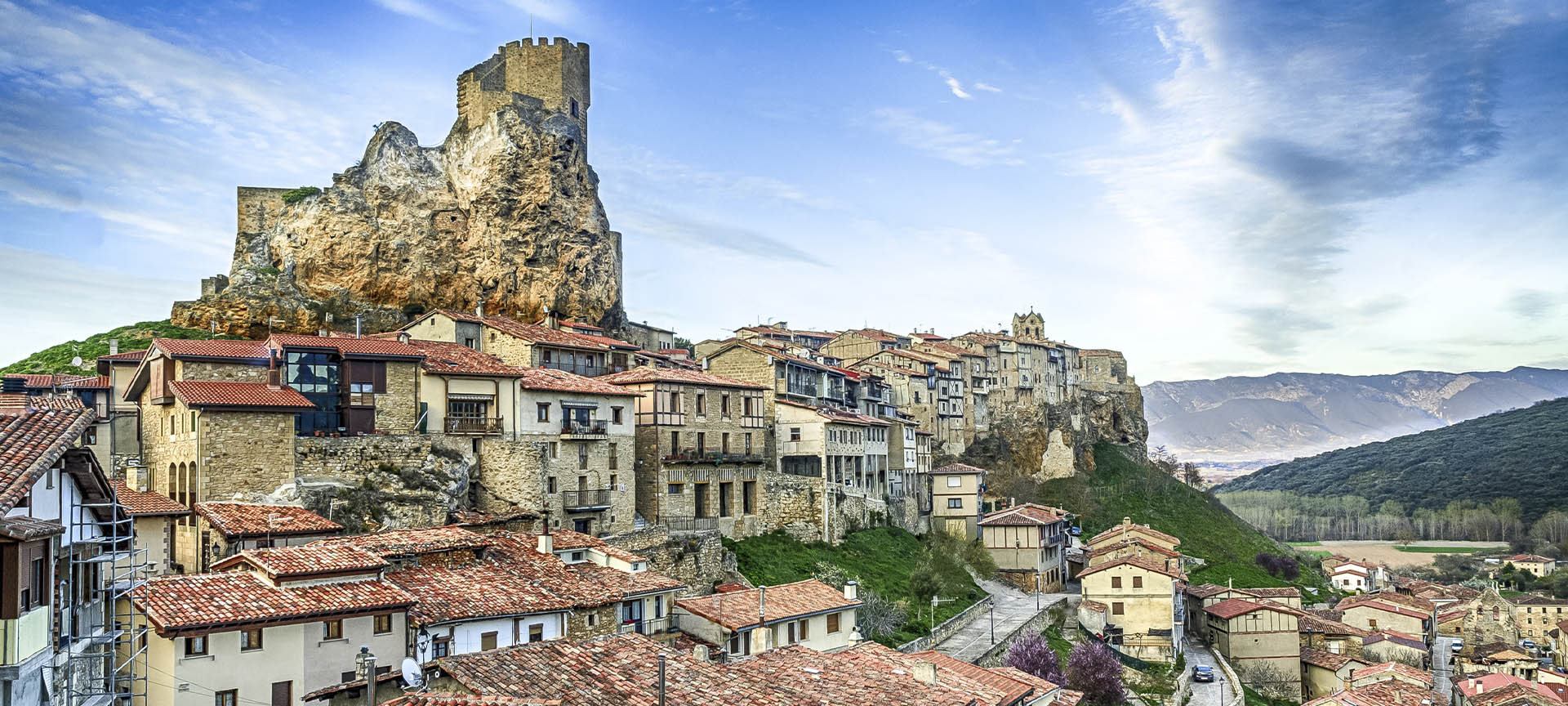
Treasures of unknown Spain in Castilla y León
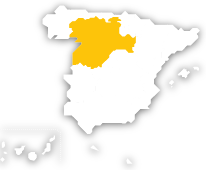
Bonilla de la Sierra, in Ávila
This little-known village was chosen to be the retreat of kings and bishops, and was a privileged enclave in the 14th and 15th centuries. It’s less than an hour from the city of Ávila, and about two hours from Madrid. You can begin on Plaza de la Villa, and then see the collegiate church of San Martín de Tours (Gothic, with interesting gargoyles), Pozo de Santa Bárbara, and the 12th-century castle of the Bishops of Ávila. And here's an interesting fact: they say that the colours of this village inspired Goya himself. He was a frequent visitor to the nearby village of Piedrahíta, which you can also visit. Some more villages in Ávila worth visiting: Arévalo , Arenas de San Pedro , Madrigal de las Altas Torres , Candeleda, El Barco de Ávila , Las Navas del Marqués, Tiemblo, etc.
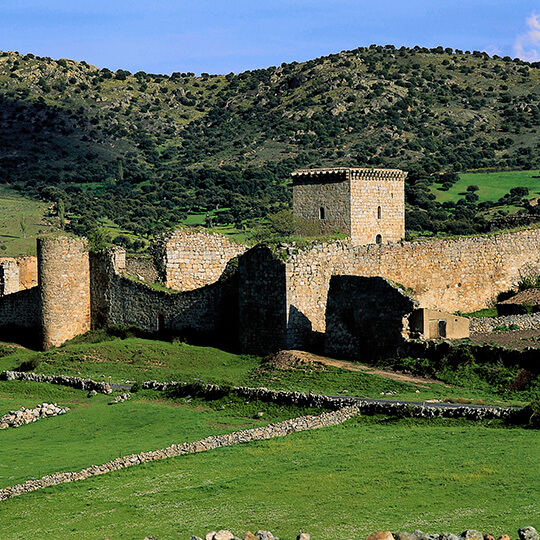
Mogarraz, in Salamanca
In the middle of Las Batuecas-Sierra de Francia Natural Park, this is one of the prettiest villages in the area, about an hour’s journey from the city of Salamanca. As you stroll around its cobbled streets, you’ll discover examples of traditional architecture, and the terracing system that enables farming on the steep hillsides, integrating perfectly with the surroundings. Mogarraz is also a kind of outdoor museum. Its façades are adorned with hundreds of portraits of past and present residents. They were painted on metal plates by a local artist who wanted to pay homage to the people who have kept the village alive over the years. Currently about 300 people live there. Some more villages in Salamanca worth visiting: La Alberca , Candealario, Cantalapiedra, San Martín de Castañar…
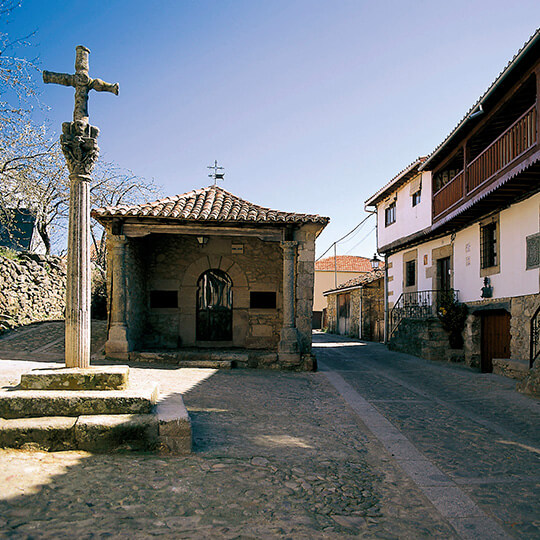
Granja de Moreruela, in Zamora
The monastery of Santa María de Moreruela is a good example of the hidden treasures of inland Spain, in a small village of no more than 300 inhabitants. This was once an important Cistercian monastery and the spiritual centre of the area in the 12th century. Its façade is still very well preserved. The village is just under 40 kilometres from Zamora and is on the popular Silver Route . When you visit, don’t forget the Quintos bridge and the church of San Juan Bautista, built with stones from the monastery of Santa María de Moreruela. Some more villages in Zamora worth visiting: Fermoselle , Galende, Puebla de Sanabria , Alcañices, San Martín de Castañeda…
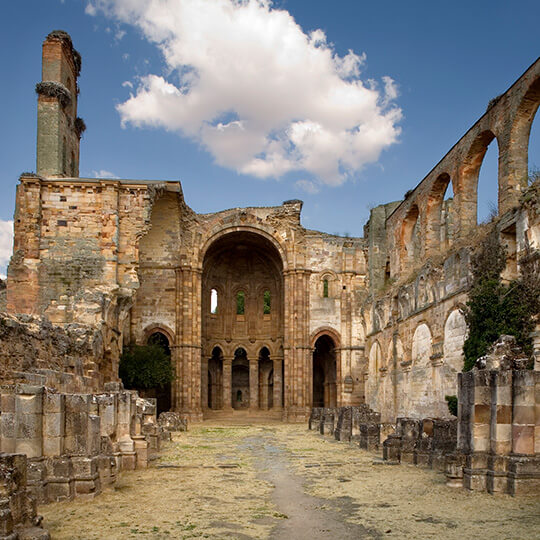
Urueña, in Valladolid
This village boasts five museums, 12 bookshops and a reading room, despite having fewer than 200 inhabitants. Urueña is known as a Book Town and is just a 45-minute drive from Valladolid. It retains its medieval street plan, 80% of its original fortified town wall, and the outer walls of its castle. It’s a delight to walk through its orderly streets of stone houses to the Renaissance church of Santa María de Azogue. For a lovely view of the town, climb up to the nearby chapel of Nuestra Señora de la Anunciada, an example of Lombard Romanesque architecture. Some more villages in Valladolid worth visiting: Trigueros del Valle, Villalba de los Alcores, Medina de Rioseco , Íscar, Simancas …
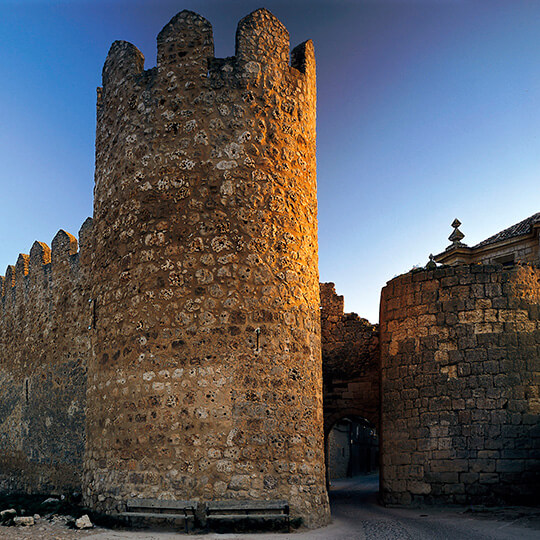
Frías, in Burgos
As you approach Frías the village seems to rise dramatically out of the green landscape. The highest points are the 10th-century fortress and the church of San Vicente Mártir, with fantastic views from both spots. Its medieval bridge, originally a Roman structure, is also interesting. If you approach Frías from the south you’ll also see its unusual hanging houses, which seem to grow organically from the cliff. Incidentally, Frías is officially classified as a city, despite having only around 300 inhabitants. The title was granted in the 15th century by King John II of Castile. It is located around 90 minutes away from cities like Burgos and Bilbao. Some more villages in Burgos worth visiting: Poza de la Sal, Santo Domingo de Silos , Caleruega…
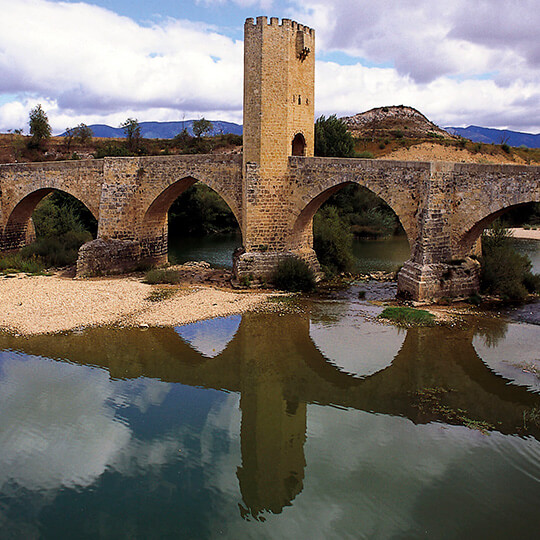
Calatañazor (Soria, Castilla y León)
Soria is one of the least densely populated territories in Europe, so this village of 51 inhabitants (less than half an hour from the city of Soria) gives you a rare chance to truly connect to nature and to the local people. When you arrive, the first thing you’ll notice is the landscape, the gorge of the river Milanos, and probably some griffon vultures on the horizon. Here, there are oak wood houses with conical chimneys like something in a fairy tale, cobbled streets, a Romanesque church, a few shops selling traditional foods like torreznos (pork rinds), and a few restaurants in original settings, such as a former dovecote… And its most prized gem, the 14th century castle and keep. The scenery from here is stunning, especially at sunset. Very near the village is the holm oak forest of Calatañazor, with trees up to 14 metres tall. And just a 10-minute drive away, the natural monument of La Fuentona is a mysterious lake of crystal-clear water.
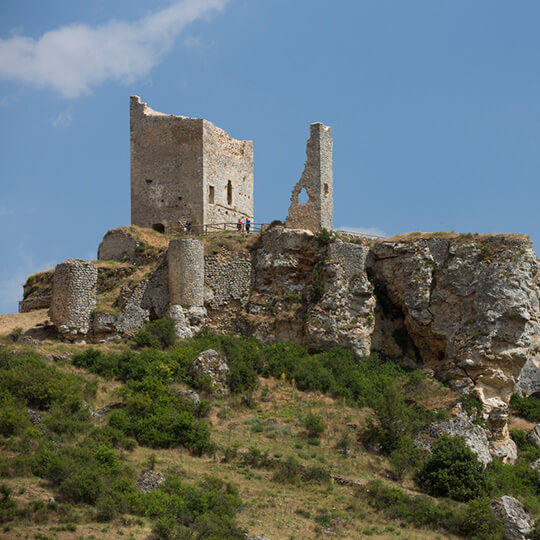
Maybe all these charms are what led Orson Welles to film “Chimes at Midnight” here. Some more villages in Soria worth visiting: Medinaceli , Yanguas, Monteagudo de las Vicarías, Vinuesa…
Becerril de Campos (Palencia, Castilla y León)
Just 15 minutes from the city of Palencia, it’s delightful to stroll around its streets and let your imagination fly to the Middle Ages and the Renaissance. That was the town’s high point, although its origins are older. One of the prettiest churches is the church-museum of Santa María, with a 13-panel altarpiece by Berruguete and a 15th-century coffered ceiling in a style reminiscent of Mudéjar art. Becerril de Campos is also the “ village of the stars ”. Why? Because the remains of the former church of San Pedro were used to create the world’s first Starlight Astronomy Monument. When this church was restored, they installed a Foucault’s pendulum (which shows the rotation of the earth), a sundial, and a starry ceiling vault for observing the constellations. Concerts and astrotourism events are sometimes held in the church. Some more villages in Palencia worth visiting: Ampudia , Aguilar de Campoo , Carrión de los Condes , Frómista , Dueñas ...
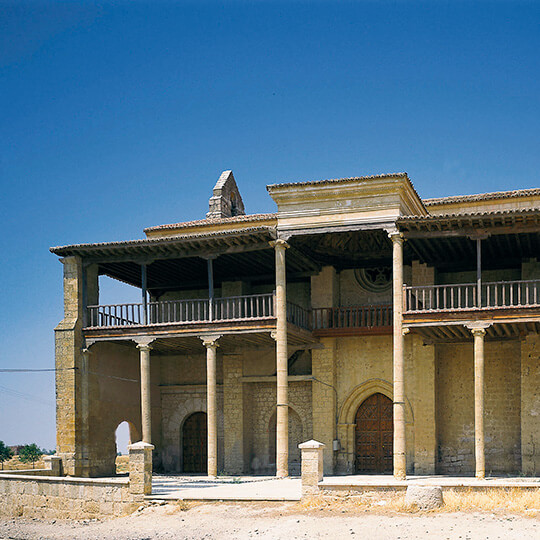
Peñalba de Santiago, León
Time seems to stand still in this beautiful village. In an area known as the Valley of Silence, it is surrounded by lush forests, rivers and waterfalls in an unspoilt landscape. It can be explored in a pleasant walk through its well-tended streets of traditional stone houses with slate roofs. In winter the village looks like a Christmas card under a blanket of snow, dominated by the 10th century Mozarabe style church of Santiago. The surrounding area is perfect for nature walks. You can spend the day hiking in the Valle del Silencio or climbing the Montes Aquilianos, or even walk to some of the nearby villages, such as Espinoso de Compludo, San Cristóbal de Valdueza, Riego de Ambrós, and San Esteban de Valdueza. Some more villages in León worth visiting: Castrillo de Polvazares, Hospital de Órbigo, Molinaseca, Balboa, Oseja de Sajambre…
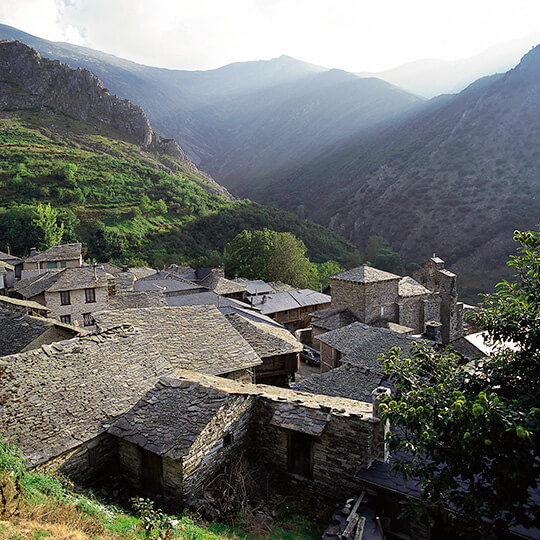
Travel plans for inspiring you
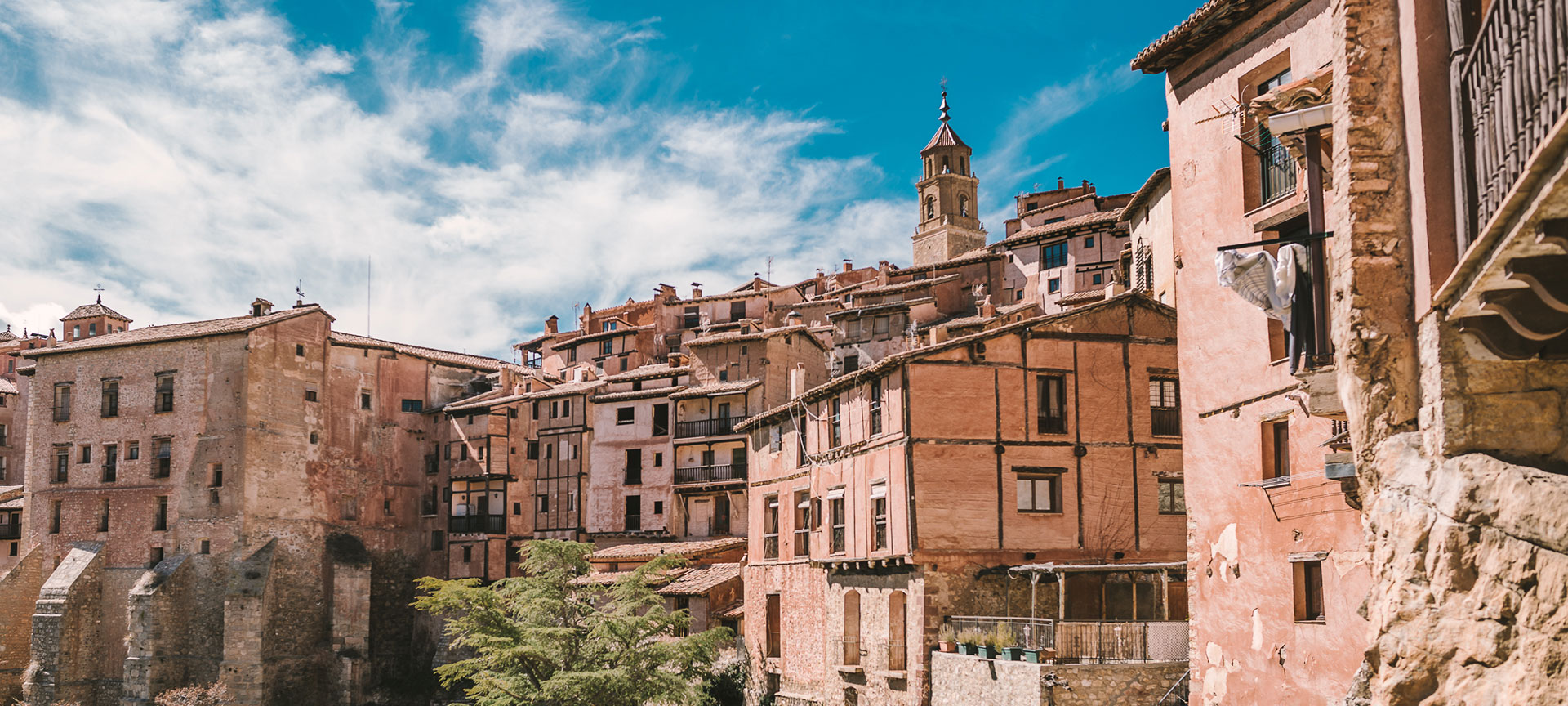
Four villages in Spain for a fairytale getaway
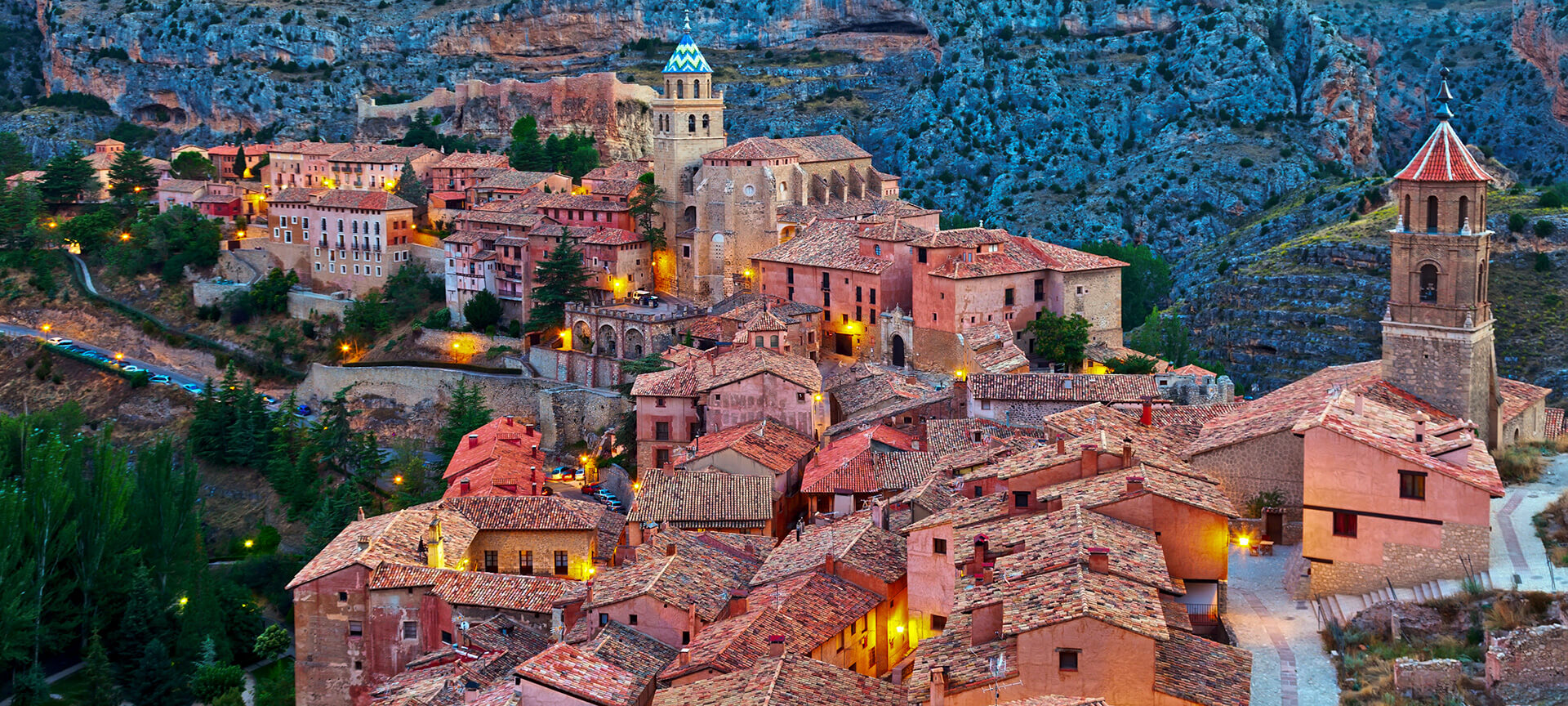
Villages of unknown Spain: Aragon
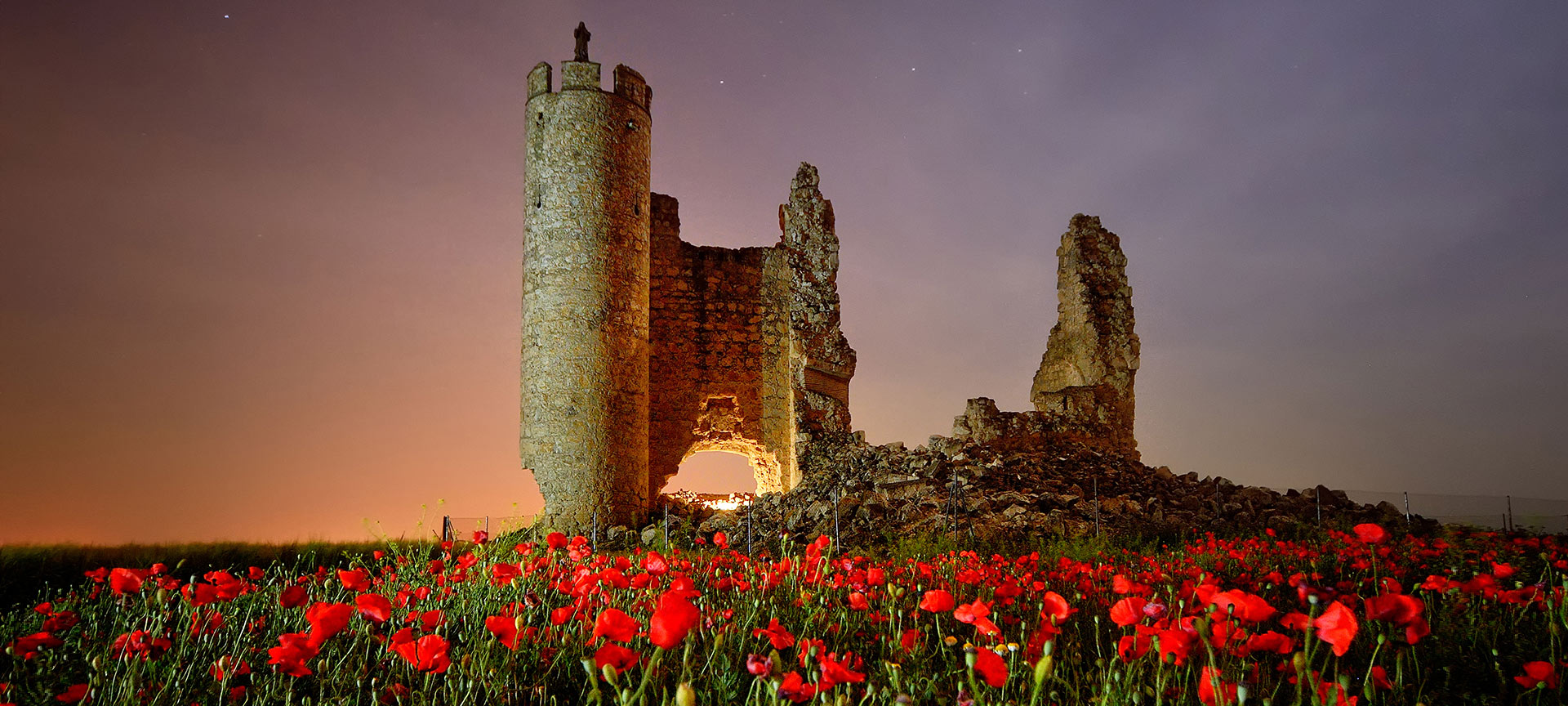
The Spain nobody knows: journeys through the landscapes of Castilla-La Mancha

Choose between thousands of activities to live your best life on holiday.
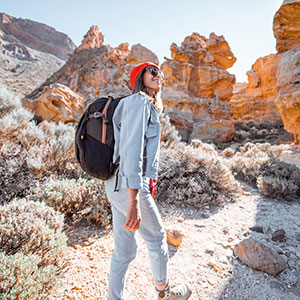
- Ir al contenido principal
- Skip to secondary menu
- Ir a la barra lateral primaria
- Ir al pie de página
Blog de viajes para viajar por libre - Viajeros Callejeros
Blog de viajes con las mejores guías, consejos, ciudades que ver, cosas que hacer, lugares que visitar para que puedas organizar y preparar tu viaje por libre por todo el mundo
10 lugares que ver en Castilla y León imprescindibles
Esta lista de los mejores lugares que ver en Castilla y León te ayudará a planear una ruta por la Comunidad Autónoma más extensa de España además de una de las más bonitas. Con nueve provincias, que reúnen desde pueblos que te trasladarán a la época medieval, pasando por paisajes naturales ideales para desconectar de la rutina, hasta ciudades Patrimonio de la Humanidad repletas de impresionantes monumentos, sin olvidar por supuesto su rica gastronomía a base de platos calóricos como el cochinillo, la morcilla, los torreznos o el famoso chuletón de Ávila, viajar a esta tierra te permitirá disfrutar como nunca de un destino único.
Aunque se puede viajar en transporte público, después de nuestra experiencia creemos que la mejor forma de conocer todos sus atractivos turísticos es haciendo una ruta circular en coche de alquiler de alrededor de unos 10 días y así disponer de la libertad de parar dónde y cuándo quieras, aunque si no quieres conducir, como decíamos, sus principales ciudades están bien conectadas en tren y autobús. La mejor época para viajar a Castilla y León es en otoño y primavera cuando los colores de la naturaleza están en su máximo esplendor, además de tener una temperatura más agradable que durante el caluroso verano y el frío invierno.
Basándonos en las visitas que hemos hecho a esta comunidad, una de las más atractivas que ver en España , hemos realizado una lista de los que creemos, son los 10 lugares que visitar en Castilla y León imprescindibles. ¡Empezamos!
Situada a media hora en tren de alta velocidad (AVE) de Madrid, esta ciudad Patrimonio de la Humanidad impresiona a primera vista por su casco antiguo medieval que alberga obras maestras de la arquitectura como el Acueducto, el Alcázar y la Catedral. Después de visitar estas tres maravillas y completar esta lista de lugares que visitar en Segovia imprescindibles siguiendo esta guía de Segovia en un día te recomendamos recuperar fuerzas pidiendo un cochinillo asado o los judiones de La Granja en algunos de los restaurantes donde comer Segovia más emblemáticos como José María o el Bar El Sitio, que son sin duda, una de las mejores cosas que hacer en Castilla y León .
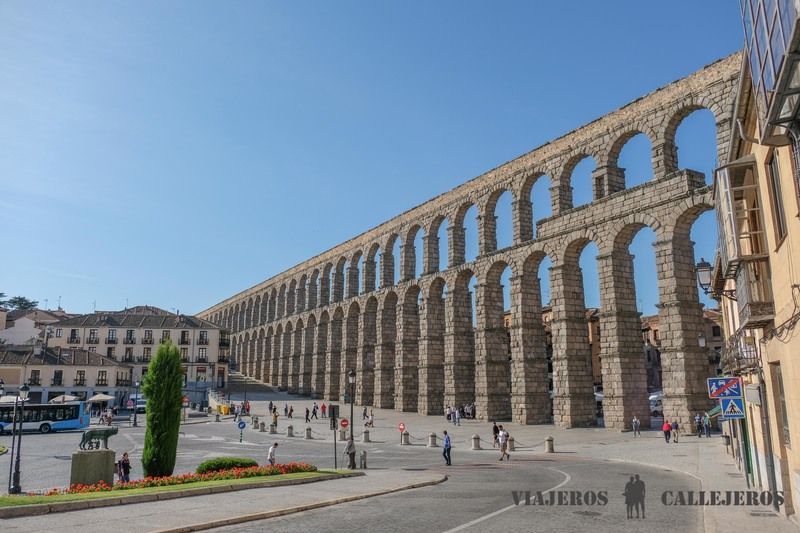
2. Salamanca
Una de nuestras ciudades de España favoritas y otro de los lugares que ver en Castillo y León más bonitos es la ciudad universitaria de Salamanca. Además de disfrutar de su gran ambiente estudiantil en plazas y terrazas, hay varios lugares que visitar en Salamanca que te dejarán sin palabras empezando por su increíble Plaza Mayor, una de las más bonitas del mundo y epicentro del precioso casco antiguo medieval. Después de conocer la Catedral, la Universidad y el Convento de San Esteban siguiendo esta guía de Salamanca en un día puedes poner la guinda tomando un plato de buen jamón ibérico acompañado de una cerveza en el Corte y Cata o platos más elaborados en el Vinodiario, que son dos de los mejores restaurantes donde comer en Salamanca. La forma más rápida de llegar a Salamanca, considerada una de las mejores excursiones desde Madrid , es coger el tren ALVIA en la Estación de Chamartín que tarda una hora y media.

3. Lago de Sanabria, uno de los lugares que ver en Castilla y León
En la provincia de Zamora se encuentra el Parque Natural del Lago de Sanabria, un lugar perfecto para relajarse unos días en contacto con la naturaleza y disfrutar de un entorno rural. El lugar más famoso de este parque es el Lago de Sanabria, el lago glaciar más grande de la península ibérica, situado a 1000 metros sobre el nivel del mar, y que cuenta con varias playas de arena y piedra en las que puedes bañarte, además de poder dar relajantes paseos en barco por sus aguas. Todo el entorno del lago es perfecto para hacer rutas de senderismos a través de sus bosques como la ruta del Cañón del Río Cárdena y Pico del Fraile que te llevará hasta alguna de sus lagunas glaciares y varios miradores. Después del ejercicio, puedes acercarte a Puebla de Sanabria, uno de los pueblos más bonitos que ver en Castilla y León , que maravilla por su casco histórico repleto de antiguos edificios como el Ayuntamiento y el Castillo de Los Condes de Benavente.
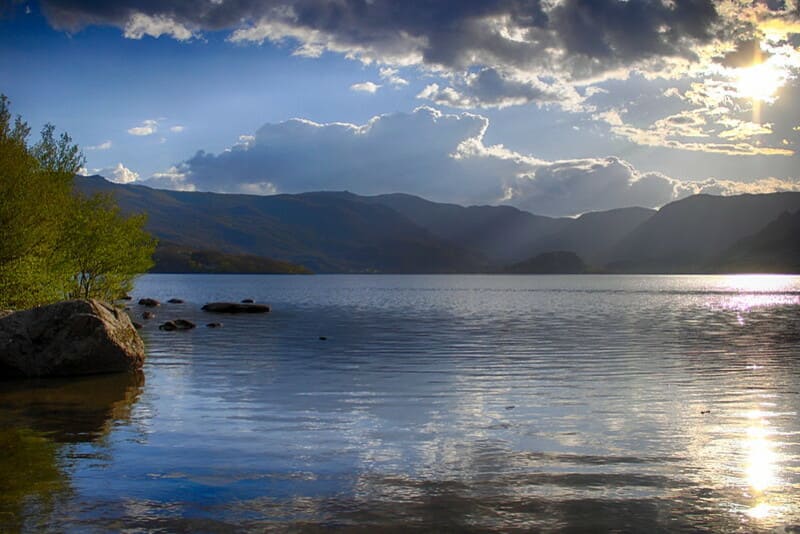
Situado al nordeste de la provincia de Burgos, a orillas del río Ebro y en lo alto de un cerro, Frías es otro de los lugares que visitar en Castilla y León y uno de los pueblos de España más bonitos. Su localización estratégica lo convirtió en un importante emplazamiento en la época medieval, de la que todavía conserva su entramado urbano con callejuelas empinadas e imponentes edificios de piedra como el Castillo de los Duques de Frías con su Torre del Homenaje, desde la que obtendrás la mejor panorámica, la Iglesia de San Vicente Mártir, además de su icónico puente de origen romano que te dará la bienvenida.

Otra de las mejores cosas que hacer en Castilla y León es dar un paseo por encima de las famosas murallas de Ávila, considerada la ciudad amurallada mejor conservada de Europa. Después de recorrer los más de 1700 metros de muralla abiertos al público, te aconsejamos perderte por el centro histórico, declarado Patrimonio de la Humanidad, siguiendo esta guía de Ávila en un día que te hará pasar por algunos de sus palacios, iglesias y plazas más representativas, para terminar viendo una puesta de sol sobre la ciudad desde el impresionante Mirador de Los Cuatro Postes, uno de los lugares que ver en Ávila más bonitos. Tampoco te puedes ir de la ciudad sin probar el contundente chuletón, su plato estrella, en alguno de los mejores restaurantes donde comer en Ávila como el Bococo o Los Candiles, y de postre acercarte a una panadería y comprar las deliciosas yemas de Santa Teresa.

6. Las Médulas
Las Médulas, un paraje natural declarado Patrimonio de la Humanidad por la Unesco y que recuerda a algunos de los parques nacionales del Oeste de Estados Unidos, es otro de los lugares que ver en Castilla y León más sorprendentes . Situado en la comarca de El Bierzo, en la provincia de León, este paisaje de arenas rojizas rodeadas del verde de los castaños y robles, se formó por el gran movimiento de tierras que se producía por la explotación de la mayor mina de oro a cielo abierto de todo el Imperio Romano. A pesar de su origen artificial, merece acercarse al centro de visitantes para hacer algunas de sus rutas más populares como la Senda de las Valiñas o la Perimetral, que te llevarán a través de un increíble entorno natural y a varios de sus miradores como el de Orellán.
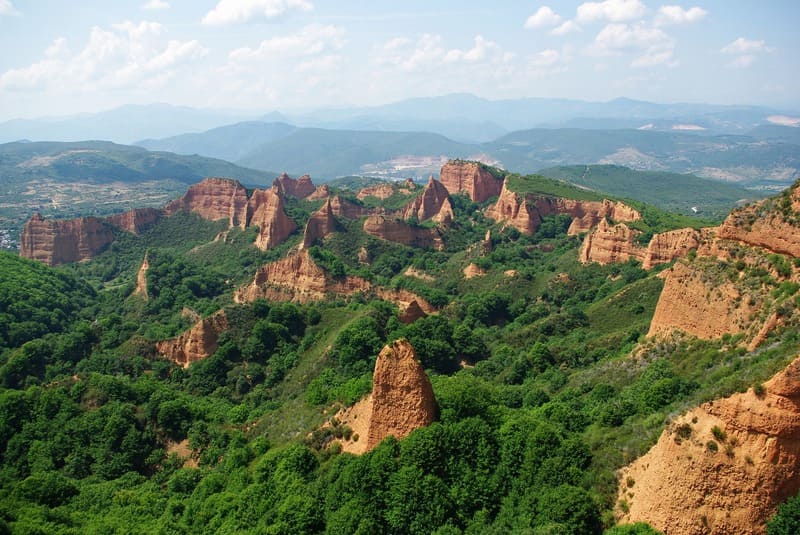
Durante nuestra última visita por el norte de España pasamos un día en Burgos, otra de las principales ciudades que visitar en Castilla y Léon . Esta ciudad que gira entorno a la espectacular Catedral, combina de forma armoniosa su pasado medieval concentrado en un precioso casco antiguo declarado Patrimonio de la Humanidad, con otras construcciones más modernas, como el interesante Museo de la Evolución Humana. Durante la ruta por los lugares que ver en Burgos más imprescindibles irás descubriendo joyas como el retablo de piedra caliza de la Iglesia de San Nicolás de Bari, la encantadora Plaza Mayor o las increíbles vistas desde el Mirador del Castillo, para después recuperar fuerzas probando la morcilla o el lechazo en algunos de los restaurantes donde comer en Burgos más tradicionales como El Morito o Casa Ojeda.

8. Visitar Pedraza, una de las cosas que hacer en Castilla y León
Visitar Pedraza, un pequeño pueblo medieval amurallado de la provincia de Segovia, declarado Conjunto Monumental, es otra de las mejores cosas que hacer en Castilla y León . Una vez cruces el Arco de la Villa, la principal puerta de la vieja muralla, te trasladarás a la época medieval gracias a sus calles empedradas, antiguas iglesias, soportales, casas de nobles blasonadas y palacios con escudos de armas en sus fachadas. Además de pasear sin prisa por el casco antiguo te recomendamos acercarte a sus principales reclamos turísticos como la Plaza Mayor, la Cárcel de la villa, la Iglesia de San Juan, el Castillo y la muralla construida entre los siglos XII y XIII. Ten en cuenta que un buen momento para visitar este pueblo es en julio, coincidiendo con la «noche de velas» , momento en el que el pueblo se ilumina con miles de velas que le dan un encanto mágico.
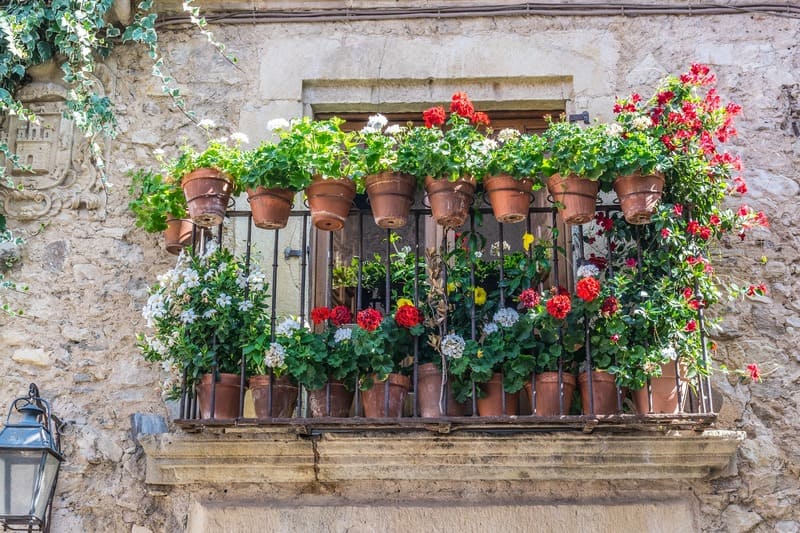
Otra de las capitales de provincia que ver en Castilla y León es León, una ciudad bimilenaria repleta de buen ambiente, además de ser una las principales paradas del emblemático Camino de Santiago. Después de completar esta lista de lugares que ver en León en un día entre los que destacan la Catedral, la Plaza del Grano, la Basílica de San Isidoro de León, la Plaza Mayor y la original Casa Botines, obra de Gaudí, no te puedes ir de la ciudad sin hacer una ruta de tapeo por el Barrio Húmedo y otra por el Barrio Romántico, dos zonas donde se concentran la mayoría de los restaurantes donde comer en León más recomendados. Y si te has quedado con más ganas de descubrir otra obra maestra de Antoni Gaudí , situada a pocos kilómetros de León, te proponemos acercarte a Astorga para conocer El Palacio de Gaudí o Palacio Episcopal. Además de esta joya arquitectónica este pueblo tiene otros puntos de interés en su cuidado casco antiguo como la Catedral de Santa María, la Muralla Romana y la Plaza España.

10. Picos de Europa
El Parque Nacional de Picos de Europa, situado entre Cantabria, Asturias y el norte de Castilla y León, y declarado por la UNESCO Reserva de la Biosfera, es uno de los mejores sitios de la provincia para hacer senderismo. Su abrupto y espectacular paisaje, con varias cimas rondando los 2000 metros y valles como los de Sajambre y Valdeón, es un paraíso para los amantes de la naturaleza con fantásticas rutas como la Senda del Cares que parte de Caín y discurre a lo largo del curso del río Cares atravesando una garganta natural, hasta llegar a la población de Poncebos (Asturias), en unas 3 o 4 horas.

Otro sitios que podrían estar perfectamente en esta lista de lugares que ver en Castilla y León son el Parque Natural Laguna Negra y Circos Glaciares de Urbión, la ciudad de Valladolid , el Castillo de Trigueros del Valle, la ciudad de Palencia , el Castillo Templario de Ponferrada, el pueblo de Ayllón, la Sierra de Gredos, Medinaceli, el Castillo de Peñafiel, Aguilar de Campoo, entre otros muchos que ha sido imposible incluir por la extensión reducida del post.
Mapa de los lugares que visitar en Castilla y León
¿Quieres organizar un viaje a Castilla y León? Consíguelo aquí: Las mejores ofertas de Vuelos a Madrid aquí Las mejores ofertas de trenes a Castilla y León aquí Los mejores hoteles a los mejores precios en Castilla y León aquí Reserva los mejores tours y excursiones en Castilla y León en español aquí Alquila tu coche en Madrid al mejor precio aquí Reserva tu seguro de viaje con un 5% descuento aquí
Si te apetece ayudarnos a completar la lista de los 10 lugares que ver en Castilla y León imprescindibles, añade el tuyo en los comentarios.
Interacciones con los lectores
Artículos relacionados, dónde comer en burgos: restaurantes recomendados.

15 lugares que ver en Burgos en un día

50 cosas que ver y hacer en España

Comentarios
19 enero, 2021 en 15:17
Ya sé que está Sanabria en la lista, pero no poner Zamora, que es la capital mundial del románico….
Vane y Roger dice
19 enero, 2021 en 16:24
Hola Nacho, Muchas gracias por leernos y la recomendación. Al ser una lista de solo 10 lugares siempre se quedan muchísimos fuera. Saludos
Deja un comentario Cancelar la respuesta
Tu dirección de correo electrónico no será publicada. Los campos obligatorios están marcados con *
Comentario *
Correo electrónico *
Acepto la política de privacidad *
Guarda mi nombre, correo electrónico y web en este navegador para la próxima vez que comente.
Suscribirse para recibir las últimas guías de viaje y nuevos artículos del blog.
Los datos que proporciones mediante este formulario serán tratados por Viajeros Callejeros 2021, S.L. como responsable de este blog. La finalidad de la recogida de estos datos es para responder a tu consulta. Estos datos estarán almacenados en los servidores de webempresa.com , situados en la Unión Europea. Puedes ejercer tus derechos de acceso, rectificación, limitación y supresión enviando un correo electrónico a [email protected]. Puedes consultar la información completa y detallada sobre privacidad en mi política de privacidad .
¡Inspírate para tu próximo viaje!
Recibe las últimas novedades del blog de viajes.
He leído y acepto la política de privacidad .
Posts de viajes más leídos
- Mejores viajes del 2024
- Las 20 ciudades más bonitas de España
- Rutas en coche por España

Enlaces de interés
- ¿Cuál es el mejor seguro de viaje?
- Las 3 mejores tarjetas para viajar sin comisiones
- 10 webs muy útiles para organizar un viaje
Contáctanos
- Quiénes Somos

Getty Images/LOOK
León is a wonderful city, combining stunning historical architecture with an irresistible energy. Its standout attraction is the cathedral, one of the most beautiful in Spain, but there's so much more to see and do here. By day you'll encounter a city with its roots firmly planted in the soil of northern Castilla, with its grand monuments, loyal Catholic heritage and a role as an important staging post along the Camino de Santiago. By night León is taken over by a deep-into-the-night soundtrack of revelry that floods the narrow streets and plazas of the picturesque old quarter, the Barrio Húmedo. It's a fabulous mix.
Leave the planning to a local expert
Experience the real León. Let a local expert handle the planning for you.
Attractions
Must-see attractions.

León's 13th-century cathedral, with its soaring towers, flying buttresses and breathtaking interior, is the city's spiritual heart. Whether spotlit by…
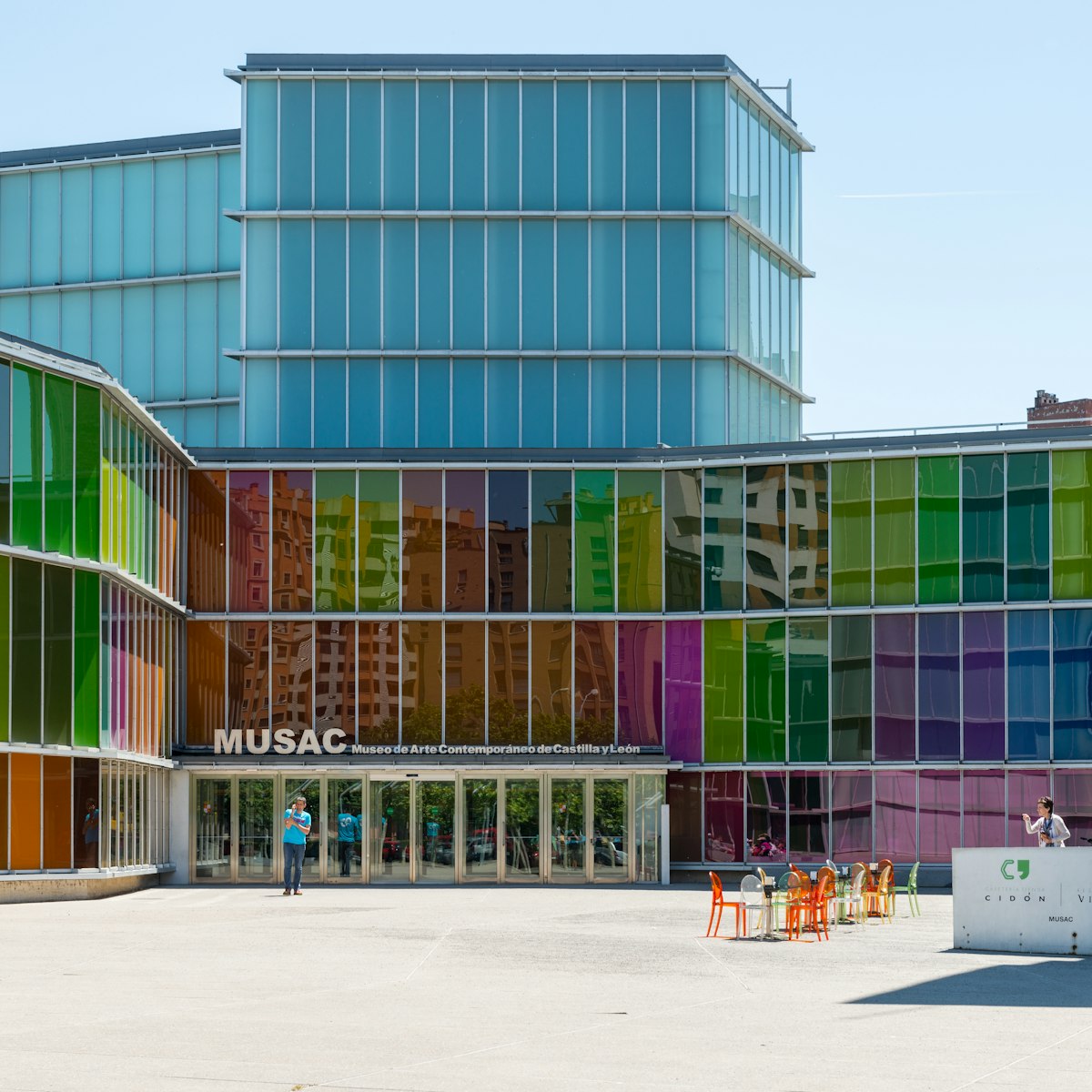
Museo de Arte Contemporáneo
León's showpiece Museo de Arte Contemporáneo has been acclaimed for the 37 shades of coloured glass that adorn the facade; they were gleaned from the…

Real Colegiata de San Isidoro
Attached to the Real Basílica de San Isidoro, the stunning Panteón Real houses royal sarcophagi, which rest with quiet dignity beneath a canopy of some of…
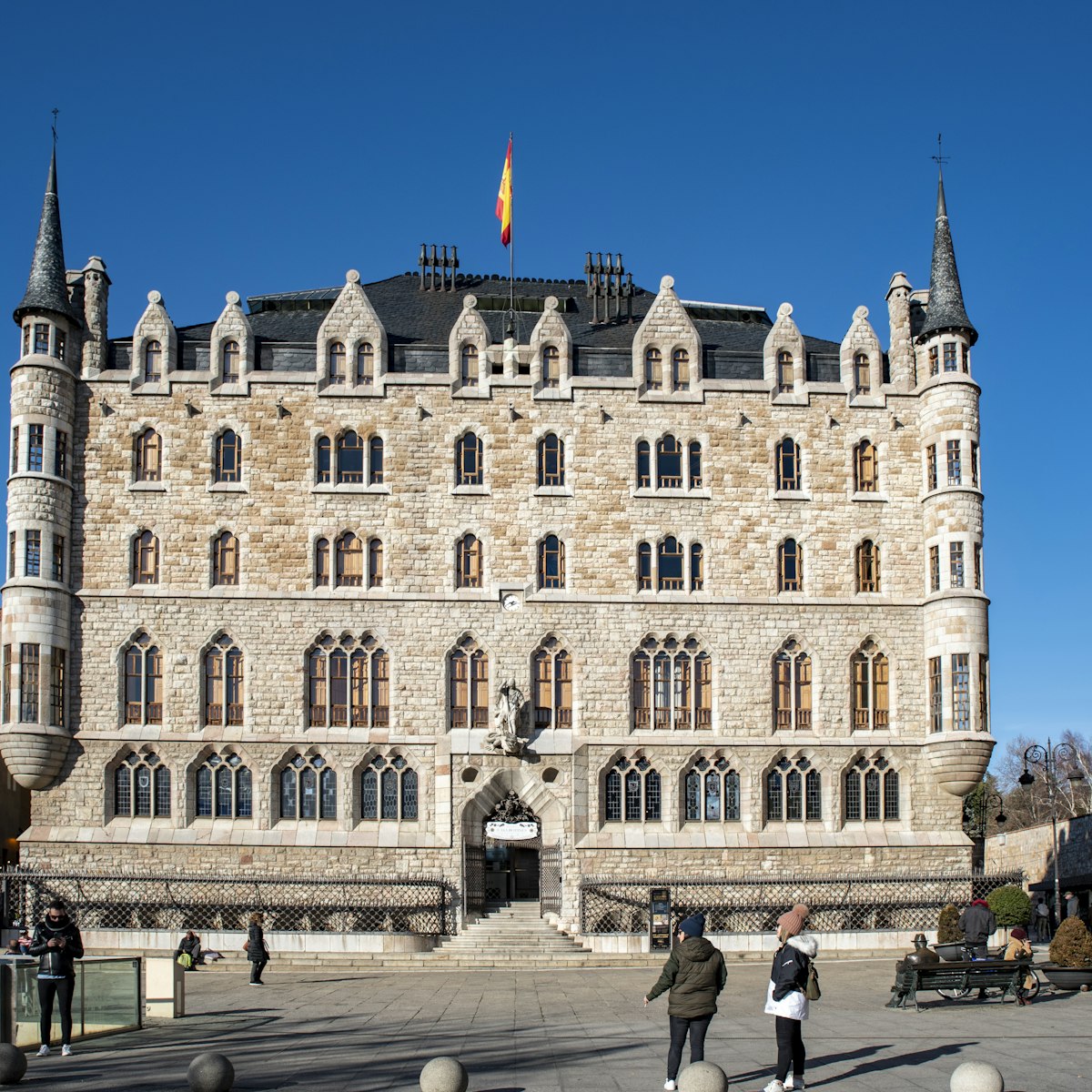
Museo Gaudí
Antoni Gaudí's contribution to León's skyline is the castle-like, neo-Gothic Casa Botines (1893), though the zany architect of Barcelona fame seems to…

Claustro & Museo Catedralicio-Diocesano
The peaceful, light-filled claustro (cloisters), with its 15th-century frescos, is a perfect complement to the main sanctuary and an essential part of the…

Real Basílica de San Isidoro
Even older than León's cathedral, the Real Basílica de San Isidoro provides a stunning Romanesque counterpoint to the former's Gothic strains. Fernando I…

Convento de San Marcos
You'll have to check into the Hostal de San Marcos parador to appreciate most of this palatial former monastery, although the historic chapter house and…

Palacio de los Guzmanes
León's recurring Renaissance theme finds expression in the splendid Palacio de los Guzmanes (1560), where the facade and patio stand out. The latter is…
Plan with a local
Experience the real Spain
Let a local expert craft your dream trip.
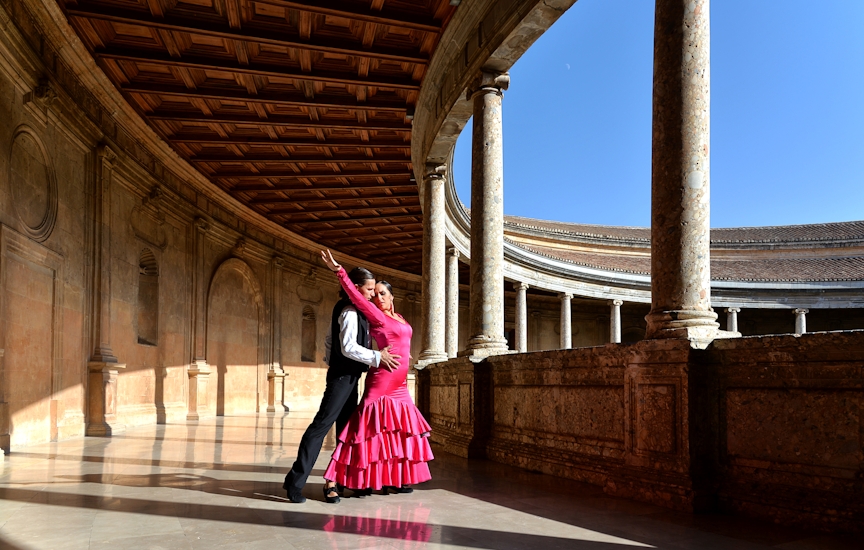
in partnership with getyourguide
Book popular activities in León
Purchase our award-winning guidebooks.
Get to the heart of León with one of our in-depth, award-winning guidebooks, covering maps, itineraries, and expert guidance.
The best wineries in Castile and Leon
Browse through the best selection of outstanding wineries.

Las dos Antiguas
The essence of Las dos Antiguas: crafting exceptional aged red wines with artisanal passion in Castilla y Léon wine region
Bodega Muelas
Traditional High Quality Wines

- Viñedos Y Bodegas Ribon
Traditional winemaking with respect to the fruit in the vineyard

Viñedos Alonso Del Yerro
The illusion of a vineyard the history of our family

Territorio Luthier
A winery where wines and music come together

Cantariña Vinos de Familia
Organic Viticulture and Authentic Wines

- Bodegas Viña Mayor
Winery certified under WfCP and producing premium Tempranillo wines

Bodegas Palacio De Lerma
A Traditional Radikal Winery

Bodegas Nabal
Family winery using grapes from century-old vineyards to make quality artisan wines

Bodegas Hnos. Pérez Pascuas - Viña Pedrosa
Products of culture and passion

- Bodegas Comenge
Indulge in the love for organic wines of the owner, Jaime Comenge

Bodega Tr3smano
Being part of something Authentic
Choose your local wine tour guide to visit Castilla y Léon
Discover Castilla y Léon's wine scene together with knowledgeable local wine tour guides.

German Zapata
Specialists in wine tourism, BARCELONA LANDS offer unique wine experiences for the adventurous...

Hello everyone! Riberatour is a company which started its adventure in 2001, when Jorge, the...
Best Cities to Visit in Castilla y Léon, Spain

Map Of Castilla y Léon Wineries
How to reach wineries in castilla y léon.
Wineries in Castilla y Léon are easily accessible by different means of transportation.
Looking for a more specific destination?
Read more about castilla y léon, everything you need to know before you visit wineries in castilla y léon.
Castile and Leon is an autonomous region of Spain and home to eight World Heritage Sites. The region is best known for its extraordinary Red wines. Ribera del Duero, Toro, Rueda and Bierzo are Spain's most respected DOs. Wineries in Castile and Leon are always open for guests and share their wines and winemaking history. You will find many amazing wineries near León or Ávila as well as hundreds of other attractions to visit throughout the region.
Are you searching for tips or advice on wineries in Castile and Leon?
We have provided a list of wineries in Castile and Leon open for visitors with direct booking options through our website. At WineTourism.com , we are available to answer any questions and help guide you towards the best fit when planning your wine region experience in Castile and Leon. We hope you will discover what makes the region special and enjoy your exploration of unforgettable Castile and Leon!
The best season to visit wineries in Castile and Leon
The best time to explore wineries in Castille and Leon is from May until October when it's pleasant with the warm temperatures and limited rainfall. The weather and climate of Castille and Leon are much suitable for a summer vacation . The Mediterranean climate makes the summer hot and dry, and winter mild.
What are the wineries in Castile and Leon like?
Here you will find:
- Wineries focusing on less traditional wines;
- Traditional family-run wineries;
- Interesting terroirs, ranging from rocky high-altitude vineyards to arid plains planted with old bush vines
- Mesmerizing mountain range, UNESCO sites, and coastal towns.
Most common grape varieties and styles of wines produced in Castile and Leon
Some Red grape varieties grown here are Tempranillo, Mencia, Cabernet Sauvignon, Merlot, and Syrah. Some White grape varieties grown here are Verdejo, and Viura.
Castile and León hold the biggest varieties of wine in Spain. Some are:
- Red wine, White, and Rosé wine
- Gran Reserva
Language tips for visiting wineries in Castile and Leon
If you visit wineries in Castile and Leon, here are some language tips you might found useful:
Frequently Asked Questions
The most frequently asked questions by our visitors, 1. what are the best wineries to visit in castile and leon.
- Vinaguarena Cellar
- Bodegas Godelia
- Bodega Y Viñedos Martín Berdugo
2. Which wineries in Castile and Leon have restaurants?
- Bodegas Y Viñedos Gancedo
- Bodega Estancia Piedra
- Bodega Laberinto El Hilo De Ariadna
- Bodega Kirios De Adrada
3. Which wineries in Castile and Leon have accommodation either apartment, hotel or b&b?
- Bodega Y Viñedos Hija De Anibal (Anibal de Otero)
- Monte La Reina
4. How do you visit Castile and Leon wineries?
5. which are the best wineries to visit in castile and leon during my holiday or vacation, 6. which wineries in castile and leon have cellar door sales.
- Bodega Sarmentero
- Bodega Nietos De Señora Maria
- Bodegas Estefania
- Bodega La Soterrana
7. Which wineries in Castile and Leon are open to the public?
- Bodegas Iturria
9. What are the best family wineries to visit in Castile and Leon?
10. are there any wineries near valladolid, léon or salamanca, what do wineries in castile and leon offer, are you interested in reading more about castilla y léon.
If you are looking for organized tours, check out our list of expert wine tour guides .
Get your monthly boost of wine inspiration
Join our newsletter now to receive our free guide on how to plan the perfect wine tour

Visitas autoguiadas
Castillos Palacios Templos Museos Rincones Leyendas
VISITACASTILLAYLEÓN
Visitacastillayleón es un servicio online de Tours Interactivos desarrollado por Terranostrum. Con sede en Fuentecén (Burgos), en Terranostrum nos dedicamos a dinamizar y fomentar los recursos turísticos que posee Castilla y León. Poner en valor los recursos de un territorio, fomentar el turismo cultural y de naturaleza o promover un modelo de turismo sostenible , son algunas de las acciones que llevamos a cabo para impulsar el desarrollo económico de un destino.
Tours Interactivos
Muestra tu localidad y ofrece al visitante un recorrido autoguiado, fácil de usar y accesible desde cualquier dispositivo móvil . Tú decides la temática; un paseo histórico por los principales monumentos, un recorrido gastronómico o un paseo nocturno en busca de leyendas... En Visitacastillayleón nos ocupamos de todo : nos encargamos de la tecnología, de la puesta en marcha y del mantenimiento.
Por qué una visita Autoguiada
Las visitas autoguiadas son de gran ayuda para el viajero, le descubren todo aquello que no se puede perder. Están pensadas para que el viajero vaya a su ritmo disfrutando al máximo de cada rincón. Son ideales para familias que viajan con niños . Ofrecen una visión completa y amena sin la necesidad de tener que ceñirse al horario de otras personas. Son un servicio innovador que permite diferenciarse de otros destinos.
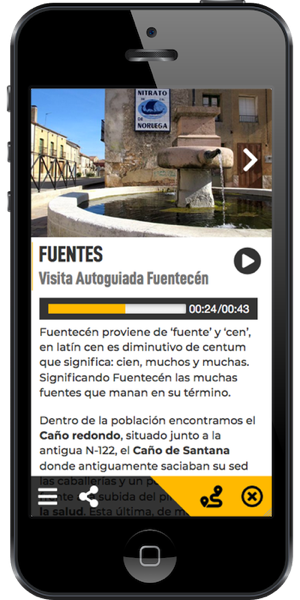
Visitacastillayleón
Cómo funciona.
Mediante una dirección web o un código QR el viajero accede al Tour interactivo . Un sistema de geolocalización indica su posición sobre un mapa y los puntos de interés que tiene alrededor, su dispositivo móvil le guiará de un punto a otro. El recorrido turístico cuenta con una descripción de los valores históricos y artísticos, información de interés, imágenes y audioguía .
Los tours interactivos nos permiten difundir de forma ilustrativa y divertida el patrimonio histórico-artístico que atesoran pueblos y ciudades. Muestran de forma visual y detallada los recursos turísticos que ofrece un destino guiando y mejorando la percepción que el viajero obtiene del mismo, además, de ampliar el tiempo que el visitante invierte en cada destino.
Facilitan la difusión a través de múltiples medios: enlaces web, correo electrónico, redes sociales, folletos, anuncios, cartelería en puntos de información, etc. Además son la herramienta perfecta para informar y promocionar las visitas guiadas o las visitas a museos que se ofrecen en las Oficinas de Turismo , aumentando su visibilidad y reservas .
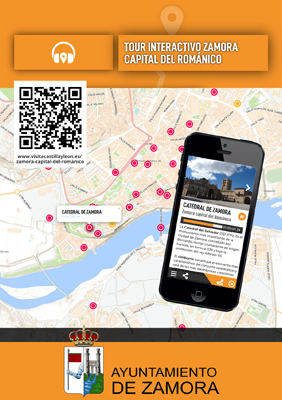
Contacta con nosotros
He leído y acepto la política de privacidad
Su correo ha sido enviado correctamente
Visitacastillayleon.es
Santa Ana, 43 B - 09315 Fuentecén (Burgos) - Telf. 947 53 27 93 - [email protected]
Política de privacidad y cookies
27 de abril de 2024
Esta es la provincia de España con más municipios
España es el tercer país europeo con más municipios, por detrás de alemania y francia. conoce cuáles son las siete provincias más numerosas:.

Madrid 27/04/2024 Actualizada 04:30
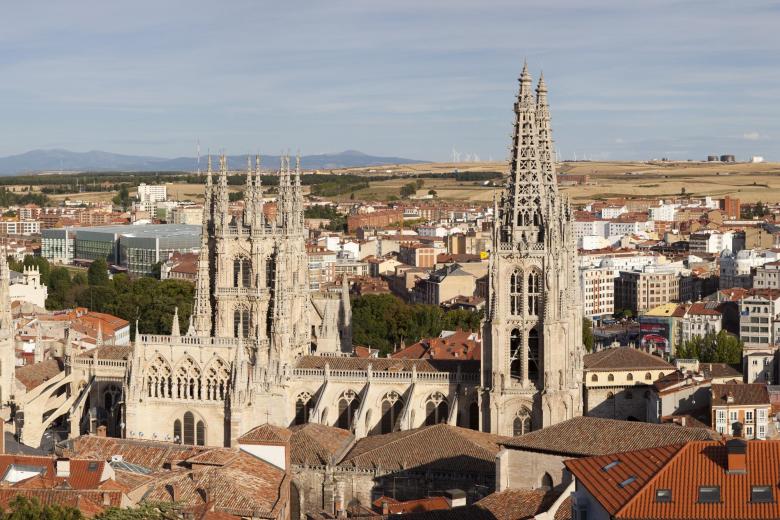
En Castilla y León se encuentra la provincia que tiene mayor número de localidades en territorio nacional que es Burgos, con un total de 371, y que se encuentran agrupados en siete partidos judiciales: Aranda de Duero, Briviesca, Burgos, Lerma, Miranda de Ebro, Salas de los Infantes y Villarcayo. Sólo son tres las que superan los 30.000 habitantes, además de la capital, Miranda de Ebro y Aranda de Duero.

Seguimos en Castilla y León para visitar la segunda provincia con mayor número de municipios, que es Salamanca, con un total de 362, aunque al igual que Burgos, con un nivel poblacional muy bajo, ya que sólo 29 de ellos cuenta más de un millar de habitantes.
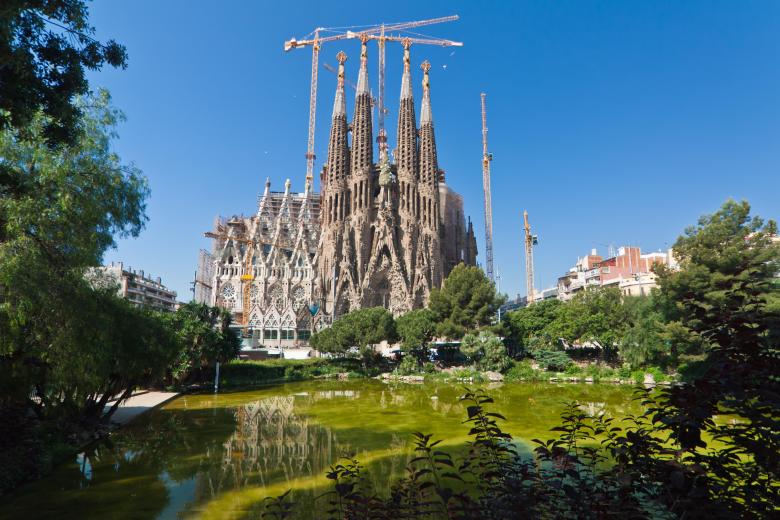
La tercera provincia española que tiene también más localidades es Barcelona con un total de 311, aunque con numerosas localidades anexas a la capital con poblaciones superiores a los 100.000 habitantes.
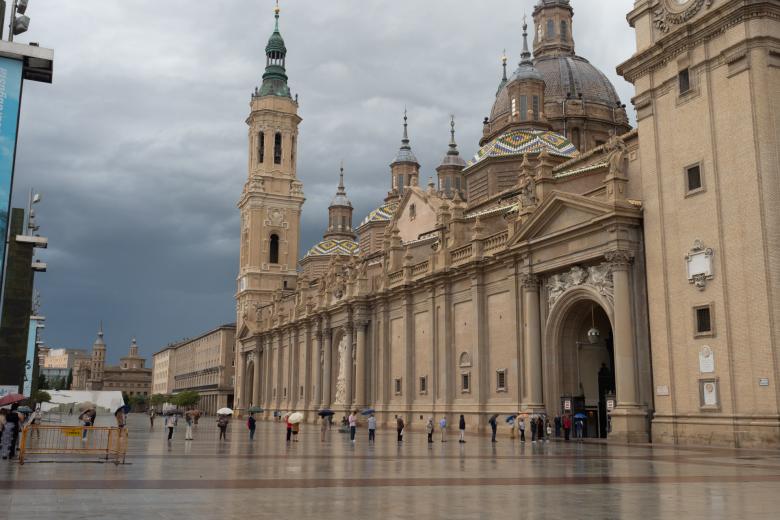
Pasamos a Aragón para visitar la cuarta provincia. Zaragoza presume de contar con 293 municipios y una de las capitales más culturales. Contemplar las vistas a la Basílica Nuestra Señora del Pilar desde los puentes de Ebro, pasear por el Parque Grande, ir de tapas por el Tubo, visitar el Palacio de la Alfajería, el palacio morisco del siglo XI o conocer los restos de Caesaraugusta son solo algunas de los planes a realizar en la capital de la región de Aragón.
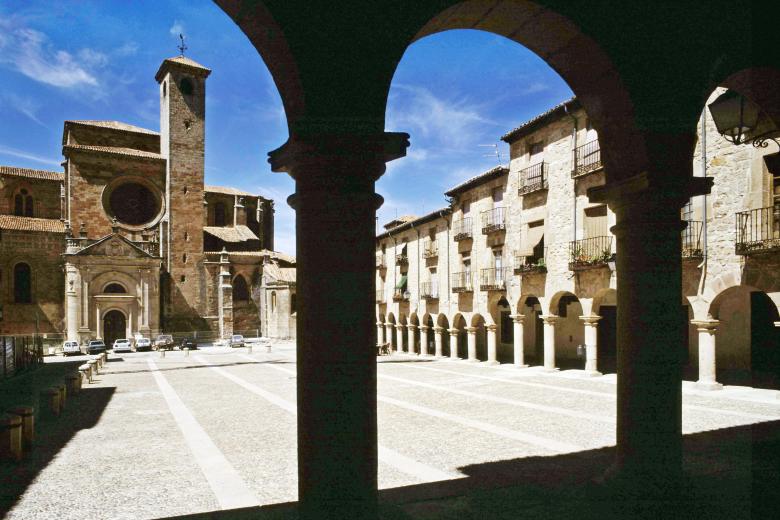
Guadalajara
Para conocer el entorno natural de esta zona es recomendable visitar sus famosos Pueblos de la Arquitectura Negra. Además, el visitante puede encontrar diversos entornos naturales protegidos como el Parque Natural de Hayedo de Tejeda Negra. Con 288 municipios, a nivel cultural, son imprescindibles los conjuntos histórico - artísticos de varias de sus localidades como Atienza, Brihuega, Hita, Molina de Aragón, Palazuelos, Pastrana y Sigüenza.
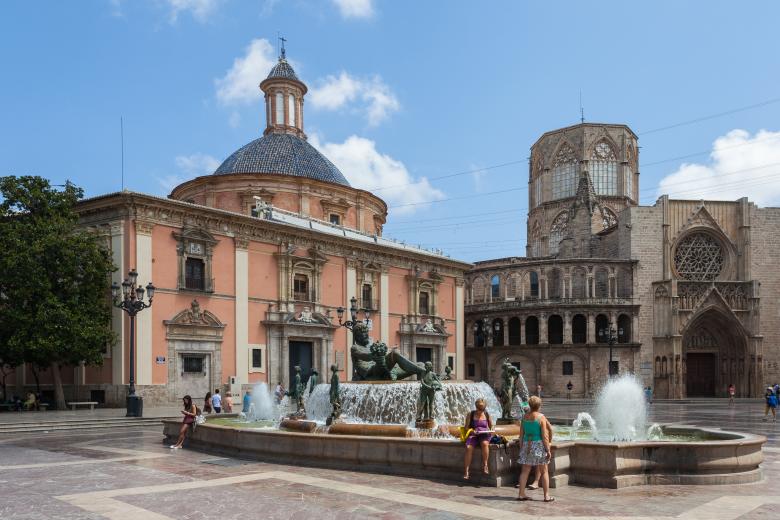
Valencia, con 266 municipios es la siguiente en el ranking. Una estruendosa mascletá en la plaza del Ayuntamiento, la ofrenda de flores en la plaza de la Virgen y el popular barrio del Carmen en un sorprendente estado hacen de Valencia una ciudad portuaria perfecta para escapada. Un lugar de contrastes que espera al viajero con un encantador casco histórico junto con edificios futuristas, que solo se supera cuando se visitan las localidades del resto de la provincia, donde el interior de la meseta se funde con el mejor mar mediterráneo de la mano de lugares como Altea.
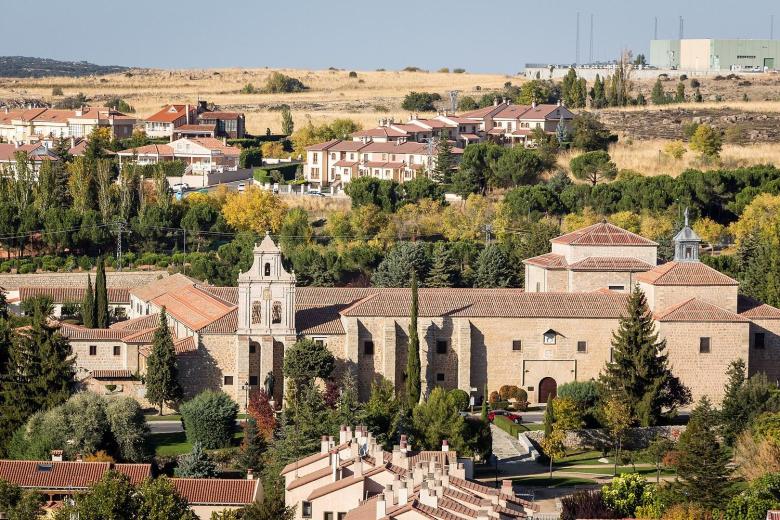
Ávila iguala con Zamora con 248 municipios. Con la muralla como símbolo inconfundible, Ávila destaca por sus calles empedradas, imagen medieval, interesantes iglesias, sabrosa gastronomía y un ambiente sosegado que te ayudará a desconectar. De hecho, las Murallas de Ávila son el símbolo principal de la provincia. Otras localidades, como Arenas de San Pedro o El Barco de Ávila reciben al viajero con monumentos y construcciones de la Edad Media. De su entorno natural, destaca la Reserva Natural del Valle de Iruelas y el Parque Regional de la Sierra de Gredos, lugares perfectos para la práctica de turismo rural. En la imagen, el monasterio de La Encarnación, donde santa Teresa de Jesús fue priora
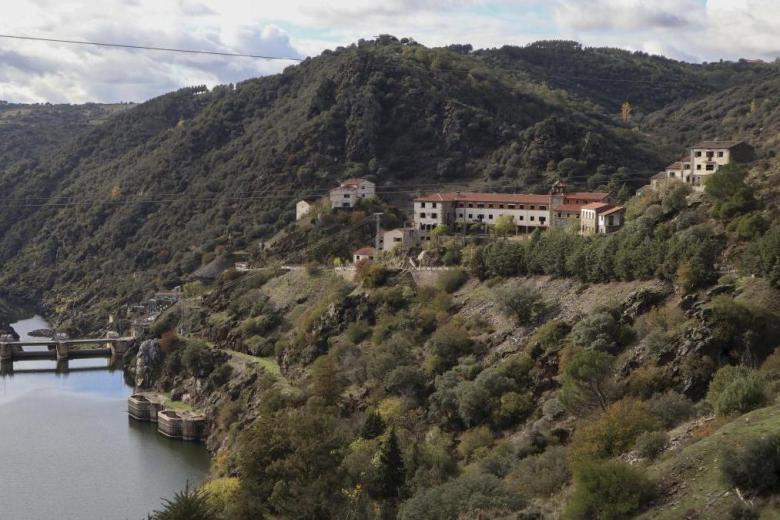
En el terreno cultural, Zamora, con 248 municipios, forma parte de varias Rutas Jacobeas, entre ellas la famosa Vía de la Plata. Merece una visita el patrimonio artístico de localidades como Toro, Benavente y Zamora, la capital, famosa por su arte románico. De las celebraciones de esta zona, sobresale su Semana Santa, declarada Fiesta de Interés Turístico Internacional. A su vez, es recomendable degustar la gastronomía típica de Zamora con especialidades como el queso zamorano o la ternera de Aliste.
Más de Viajar
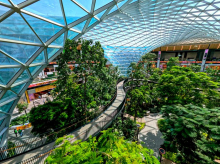
El único aeropuerto español que está entre los mejores del mundo
Cristina Blanco Vázquez

La mejor zona de España para viajar este verano: un oasis de tranquilidad no masificado

El Parador español levantado sobre las ruinas de un templo romano
Nastasja Vásquez
El pueblo que mejor huele de España
La joya escondida de guadalajara donde se rodó 'el hombre y la tierra'.
Vicky Vilches
Crisis migratoria
Madrid, Andalucía, Castilla-León y Cataluña rechazan el acuerdo entre el Estado y Canarias del reparto de menores migrantes
El pnv exige al gobierno central que “ejerza sus competencias” con la determinación de la edad de los migrantes antes de hacer la distribución.
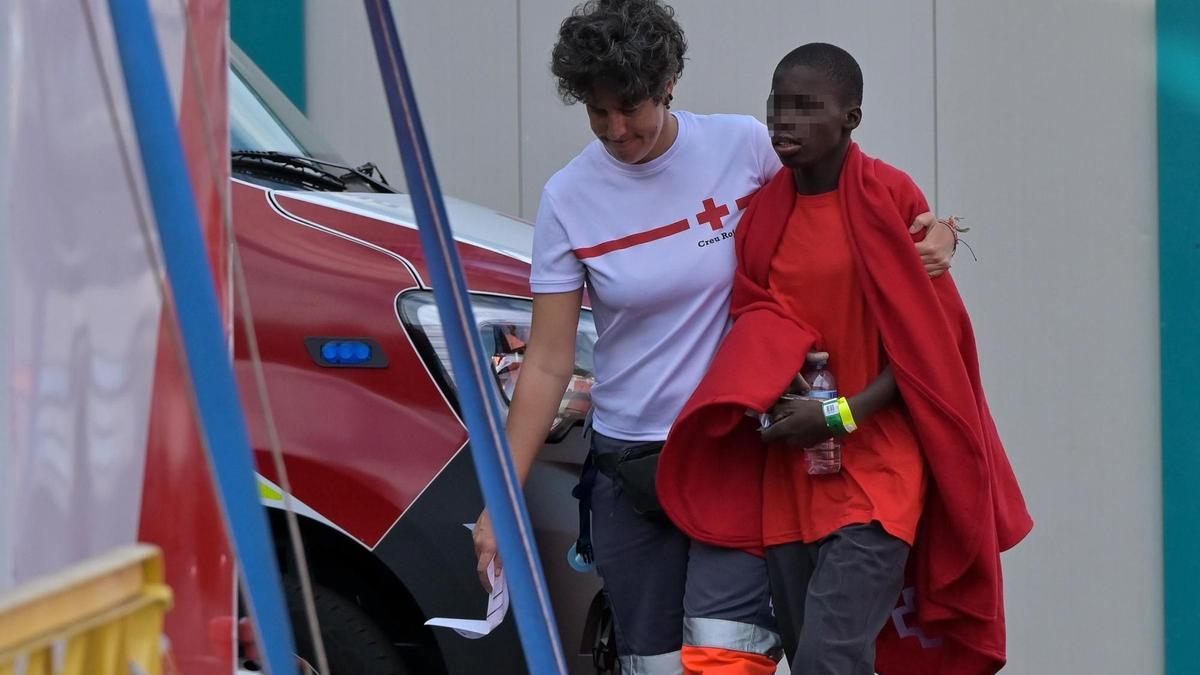
Menor llegado en un cayuco a El Hierro en febrero de este año / EFE
Joaquín Anastasio
El pacto entre Canarias y el Estado para la reforma legal que ampare un mecanismo fijo de reparto de menores migrantes no acompañados tiene aún mucho trecho que recorrer. De entrada, el socio minoritario del Ejecutivo regional, e l PP, no lo tiene aún nada claro . Al menos en el ámbito de la dirección estatal del partido, que parece recoger o expresar el sentir de buena parte de las comunidades donde gobierno. Para los populares, cualquier apoyo a la reforma del artículo 35 de la Ley de Extranjería que ampararía ese “reparto obligatorio” entre todos los territorios del Estado pasa por un acuerdo previo entre el conjunto de comunidades autónomas, algo que aseguran que no se produce en la actualidad entras otras cosas, según el PP, porque no se las ha consultado .

El temor a PP y Vox hace a Canarias renunciar a que el reparto obligatorio de menores migrantes se apruebe en 15 días
De hecho, comunidades gobernadas por el PP como Madrid, Andalucía y Castilla-León rechazaron este martes el acuerdo por considerarlo “unilateral”. Piden al Ejecutivo central “actuar en origen” y que todos los territorios participen en el establecimiento de las condiciones en que se llevaría a cabo la distribución con la nueva norma. También desde Cataluña , el actual ‘gobern’ de la Generalitat, en un contexto preelectoral de cara a los comicios autonómicos del próximo 12 de mayo, ha rechazado el acuerdo por considerar que la comunidad ya asume en la actualidad un mayor número de acogidas procedentes de otras regiones.

El ministro de Política Territorial y Memoria Democrática, Ángel Víctor Torres (i), y el presidente de Canarias, Fernando Clavijo (d) conversan durante una reunión en la sede de la Presidencia del Gobierno de Canarias, a 22 de abril de 2024, en Las Palma. / EUROPA PRESS
Esta es la posición de partida en el grupo del PP en el Congreso sin cuyo apoyo será difícil el visto bueno parlamentario para esa modificación normativa con la que se pretende aliviar a Canarias de la presión de acogida que sufre desde hace meses con más 5.500 menores tutelados . O, al menos, es el mensaje que dejó este martes el portavoz del PP en el Congreso, Miguel Tellado , preguntado sobre la valoración de su grupo respecto al acuerdo de fondo alcanzado entre Canarias y el Estado. “El reparto debe pactarse con las comunidades autónomas. Canarias tiene un problema de presión migratoria que debemos resolver entre todos de forma solidaria y humanitaria, pero el Gobierno (central) debe hacerlo con todas las comunidades involucrándolas en la solución”, afirmó el portavoz popular, que sigue utilizando el concepto “solidaridad” como un término que apela a la voluntad de los gobiernos regionales respecto a su capacidad de acogida.
"Canarias tiene un problema que debemos resolver entre todos de forma solidaria, pero el Gobierno debe hacerlo con todas las comunidades involucrándolas en la solución” Miguel Tellado — — Portavoz del PP en el Congreso
“Me temo que eso no ha pasado porque es la forma habitual de proceder del Gobierno de Pedro Sánchez” , ha concluido Tellado poniendo así en entredicho el valor del acuerdo alcanzado. El dirigente popular dio por hecho que si ese consenso entre autonomías se produce, el PP respaldará el texto en las Cortes, sin aclarar tampoco cómo actuaría el partido en caso de que su socio de gobierno en cinco comunidades, Vox, se niega a asumir este acuerdo dado que ya anunciado que está en contra.
Mecanismo permanente
También el PNV reclama ese pacto territorial para que la medida pueda ser efectiva, pero apoyando claramente el paso previo avanzado por los gobiernos central y canario. Eso sí, considera que no ha sido buena idea que se anuncie sin que previamente no se haya traslado a los grupos parlamentarios para intentar sumar una mayoría en el Congreso. El portavoz peneuvista, Aitor Esteban , aseguró que “este es un tema que nos preocupa porque nuestros servicios de las Diputaciones Forales, que son las que se encargan de los menores, están saturados, y porque al final la desorganización que hay a lo que lleva es a que desde algunas comunidades autónomas se envíen menores migrantes a otras quitándose responsabilidades que tienen por ley y por competencias”.
El dirigente vasco cree que “este esfuerzo debe ser repartido, eso está claro, pero hay que hacer las cosas bien y tendremos que hacer un mecanismo permanente”. Para ello, reclama que el Gobierno central “tiene que ejercer sus competencias, que es la frontera , y eso quiere decir que tiene que identificar a los menores, que ahora no lo hace, porque muchos viajan como si fueran adultos y luego dicen que son menores”.
A partir de ahí, reclama al Estado que “les tiene que poner un tutor” para que “la comunidad equis” a la que se asigne cada menor sea “la institución asignada y asuma la responsabilidad”. “El Estado tiene que colaborar con ese mecanismo permanente y todos los que tengamos competencias, ejercerlas y responsabilizarnos como tutores”, insistió Estaban antes de reseñar que “no creo que haya sido bueno el anuncio en el que se dan por hechas algunas cosas que todavía tendrán que discutirse con las comunidades autónomas y con los grupos parlamentarios”.
Suscríbete para seguir leyendo
- crisis migratoria
- Pedro Sánchez
- menores migrantes
Noticia guardada en tu perfil
Ver noticias guardadas
- Lo más leído
- ¿Quién propuso a Serrat para el premio "Princesa"? La opción llegó razonada "in extremis" por un "dinosaurio" sindical
- Joan Manuel Serrat, cantautor y músico al servicio de la poesía y la tolerancia, premio “Princesa” de las Artes 2024
- Una mujer ingresa en la UCI tras beber un café con bichos de una máquina del aeropuerto de Palma
- Paola Olmedo se pronuncia sobre su nueva relación tras separarse del hijo de Carmen Borrego: esta es la persona con la que podría estar saliendo y que José María conocería
- Serrat: "No saben con cuánta emoción recibo la noticia del premio 'Princesa de Asturias'
- El turronero rompe su pacto con Bertín Osborne y se pronuncia sobre su relación con Gabriela Guillén, desaparecida: "Por supuesto que he visto fotos
- Urdangarín habla: ya divorciado y sin condenas pendientes
- Makoke vuelve a cargar duramente contra Matamoros: "No está en las mismas condiciones
Cita con Angie Bru, la doctora que vino a España y se "fugó" a Alemania: "Un médico feliz, que gana más, es un paciente feliz"
Música en esencia pura: así arrancó el Gijón Sound
El concurso de tonada "Ciudad de Oviedo" llega a su primera final
Isabel san sebastián: "si la reina urraca ‘la temeraria’ hubiera sido hombre, sería ‘el audaz’".
Sonia Vaccaro, psicóloga clínica que hablará en el II Congreso de Prevención de la Violencia de Género de Gijón: "Enseñar a un maltratador a ser buen padre es difícil"
Primera Feria del libro de poesía en San Román de Candamo
El premio "princesa" de comunicación y humanidades tiene 47 aspirantes, agenda: qué hacer en asturias hoy sábado 27 de abril.
Castilla y León
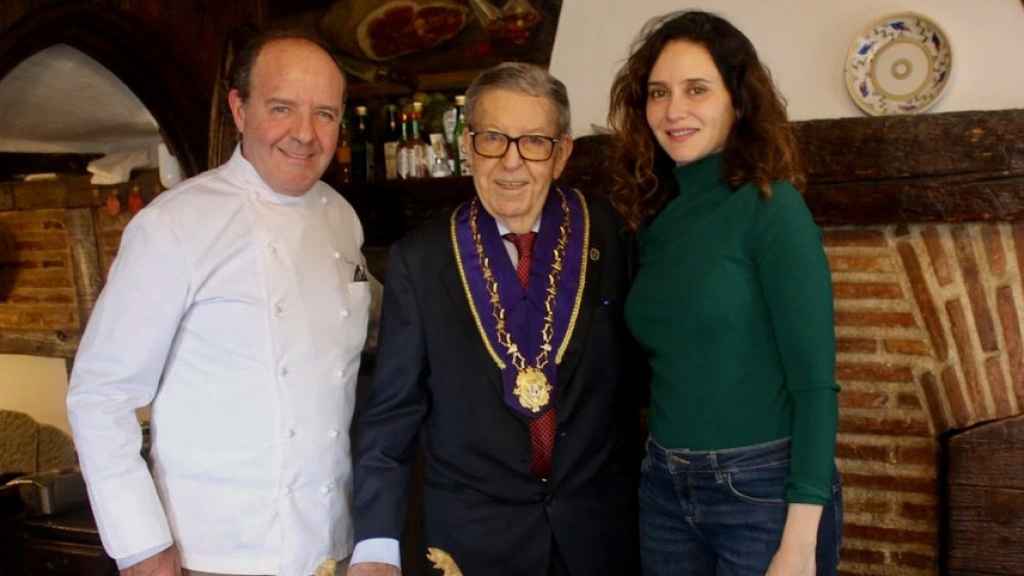
El nieto y el hijo del mesonero Cándido López y la presidenta de la Comunidad de Madrid, Isabel Díaz Ayuso, este jueves.
Ayuso hace parada en el rey del cochinillo y se deleita con su plato estrella
La presidenta de la comunidad de madrid protagonizó una tradicional ceremonia en un espacio único del local, noticias relacionadas.
- Ayuso acusa a Sánchez de hacer "chantaje emocional" y asegura que ella no lo haría: "La víctima no interesa"
- Ayuso se va de cañas por Valladolid: los lugares donde estuvo y con quién
- Mañueco critica que Sánchez "se coja cuatro días libres cuando se ve asfixiado por la corrupción”
La presidenta de la Comunidad de Madrid, Isabel Díaz Ayuso, visitó este jueves uno de los restaurantes más reconocidos de Castilla y León, el Mesón de Cándido, ubicado en la ciudad de Segovia, junto al característico Acueducto. Allí, la líder madrileña ha participado en la tradicional ceremonia del partido del cochinillo con un plato para, a continuación, lanzar la vajilla al suelo.
Un acto que ha tenido lugar en el mítico comedor del Torreón del Mesón de Cándido, con vistas al Acueducto de Segovia y también a la plaza del Azoguejo. A continuación, Ayuso se ha deleitado con el delicioso cochinillo del establecimiento, reconocido en toda España. El propio Mesón de Cándido ha dejado testigo de esta visita, que se suma a la larga lista de visitas de autoridades y personas ilustres al local, en una publicación en su cuenta de Facebook.
"Ayer recibimos en los salones del Mesón de Cándido a Isabel Díaz Ayuso, presidenta de la Comunidad de Madrid, que no quiso irse sin probar nuestro delicioso cochinillo. ¡Muchas gracias por la visita!", han publicado, junto con dos fotos de la presidenta madrileña con las tres generaciones del mítico establecimiento.
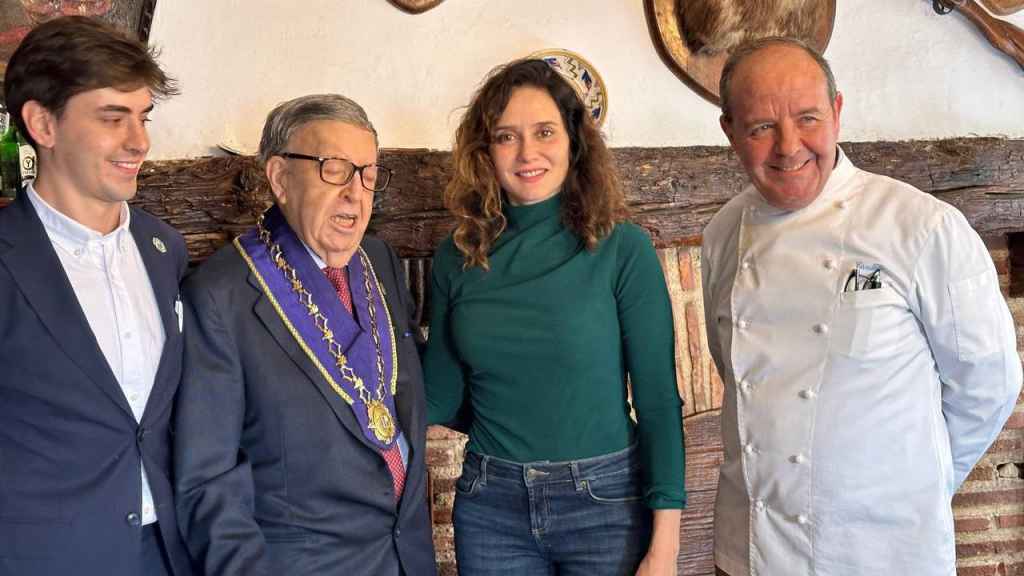
Las tres generaciones del Mesón de Cándido junto a la presidenta de la Comunidad de Madrid, Isabel Díaz Ayuso.
Una visita que llega un día después de que Ayuso acudiese a Valladolid y pasase la tarde con el presidente de la Junta, Alfonso Fernández Mañueco, y con el alcalde de la ciudad, Jesús Julio Carnero, para participar posteriormente, este jueves por la mañana, en un encuentro económico en la ciudad del Pisuerga. Una visita que no dejó indiferente a nadie y en la que Ayuso aprovechó también para fotografiarse con ciudadanos por la calle, cual estrella de rock.
Más en Segovia
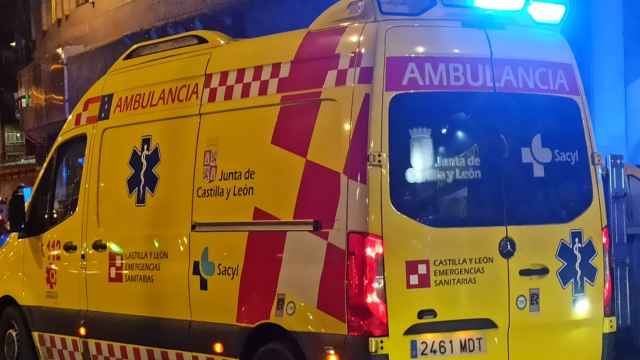
Otra noche trágica en las carreteras: fallece una mujer de 83 años en Segovia tras una brutal colisión
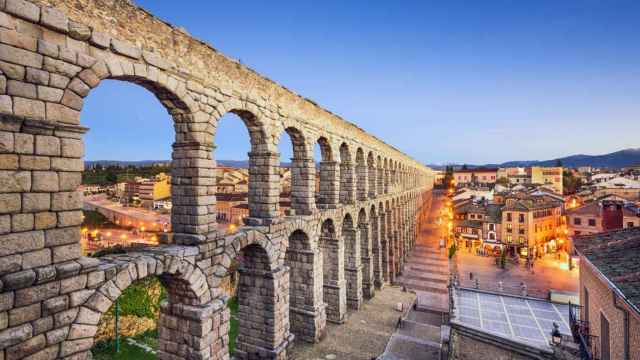
El Acueducto de Segovia protagonizará un famoso programa de TVE
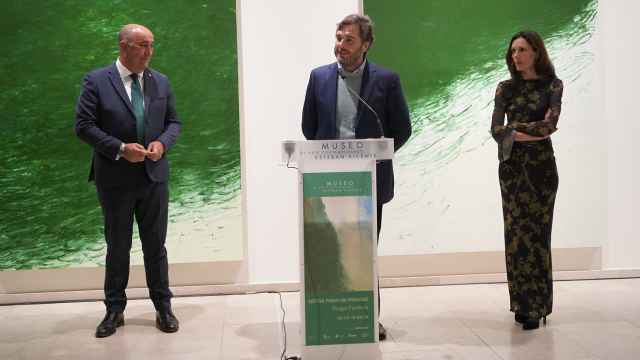
El asturiano Hugo Fontela siembra de verde las paredes del Museo Esteban Vicente hasta el próximo mes de septiembre con la exposición 'Notas para un paraíso'
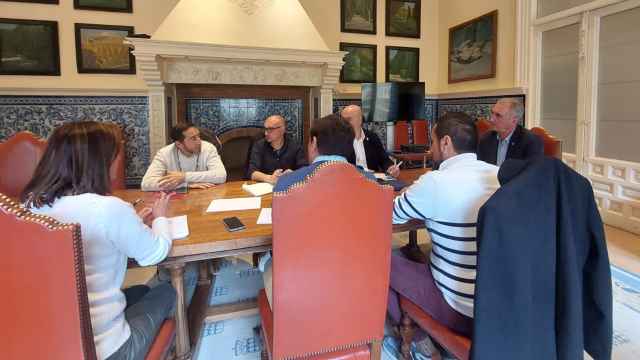
'Food trucks' y actuaciones musicales: la oferta de la Feria de Día en las fiestas de San Juan y San Pedro de Segovia
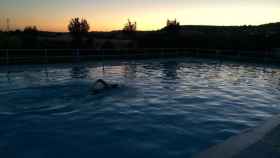
Bar y piscina por 1.000 euros
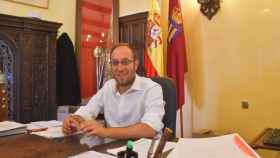
La Diputación de Salamanca recauda casi 84 millones en 2023, un 3,11% más que en el anterior ejercicio

IMAGES
COMMENTS
It has a whole host of places which are well worth visiting, including towns like Avila, Salamanca and Segovia (all three World Heritage Cities) and unique attractions such as Burgos Cathedral and the Atapuerca archaeological site, which contains traces of the first settlers in Europe. The famous Way of Saint James also runs through the Castile ...
At www.turismocastillayleon.com you will find all the tourist offer of Castilla y Leon. Choose what you want based on your interests (nature, heritage, gastronomy, health or events), who are you traveling with or what is your desired destination. You can also access the accommodation information, restaurants and active tourism. Meet Castilla y Leon, the world's largest Museum is alive.
Spain, Europe. If you're looking for a window on the Spanish soul, head to Castilla y León. This is Spain without the stereotypes: with vast plains, spectacular mountain peaks and evocative medieval towns and villages. Experience fabled cities like Salamanca, with its lively student population, and Segovia, famed for a fairy-tale fortress that ...
Castilla y León. Proof that Astorga does not exist solely for the virtuous souls of the Camino comes in the form of this quirky private museum. Chocolate ruled Astorga's…. Discover the best attractions in Castilla y León including Catedral, Catedral, and Acueducto.
Castile and Leon are united to form Spain's biggest region. This region (known in Spain as Castilla y Leon) was the driving force of the Reconquest and its leaders brought great wealth to the region. If you are looking for monuments, art treasures and historic sights this is the region to choose. Salamanca and Leon are particular highlights and ...
The Holy Cathedral of Segovia is a Catholic temple devoted to the Assumption of the Virgin Mary and San Frutos. During the Communions War (1520 - 1522) the Cathedral was destroyed, it was located in front of the Fortress. They decided to build a new one. The first stone of the new Cathedral was used the 8th of June 1525 in its current ...
En www.turismocastillayleon.com podrás encontrar toda la oferta turística de Castilla y León. Elige lo que buscas en función de tus intereses (naturaleza, patrimonio, gastronomía, salud o eventos), con quien viajas o cual es tu destino deseado. Podrás acceder también a la información de alojamientos, restaurantes y turismo activo. Descubre Castilla y León, el Museo más grande del ...
Castilla y León is the largest Community in Spain and one of the largest in Europe. It is made up of nine provinces, Ávila, Burgos, León, Palencia, Salamanca, Segovia, Soria, Valladolid and Zamora and stands out for being one of the Spanish regions with the greatest cultural, heritage, ethnographic and natural wealth and where the first traces are found of the Spanish language.
Hungry to encounter more of Spain's culture and cuisine, I decided to take a road trip to the often overlooked region of Castilla y León. One of the nation's 17 autonomous communities, it's located north and west of the central capital region. Away from crowds of tourists, a fascinating (and very filling) road trip lay ahead.
A few places you have to visit include: the cathedral, Plaza del Mercado Grande and Plaza del Mercado Chico, the Castle of Don Álvaro Luna, declared a Historic Monument, the Convent of Santa Teresa and the Basilica of San Vicente. Round off your trip with a sweet touch, sampling some delicious "yemas" from Ávila. Views of Burgos.
2023. 7. Cathedral of Segovia. 3,547. Speciality Museums. Admission tickets from ₹395. The Holy Cathedral of Segovia is a Catholic temple devoted to the Assumption of the Virgin Mary and San Frutos. During the Communions War (1520 - 1522) the Cathedral was destroyed, it was located in front of the Fortress.
7. Burgos. The impressive Burgos cathedral. Burgos cathedral is one of the most impressive Gothic cathedrals in Spain, and the main attraction of Burgos. That alone gives it a spot on our top 10 things to do in Castilla Y León Spain. But there's much more to see in the city.
Frías, Burgos. Most beautiful villages in Castile and León: Frías. Although Frías has just over 250 inhabitants, it has the title of the smallest city in Spain. Located to the north of Burgos, it is part of the region of Las Merindades. The village has a special charm, with a medieval town centre declared a Historic-Artistic Site.
Castilla y León Tourism Board. Salamanca is one of the oldest university cities in Europe and it has not one, but two majestic cathedrals to explore. The New Cathedral of Salamanca, built between ...
Peñalba de Santiago, León. Time seems to stand still in this beautiful village. In an area known as the Valley of Silence, it is surrounded by lush forests, rivers and waterfalls in an unspoilt landscape. It can be explored in a pleasant walk through its well-tended streets of traditional stone houses with slate roofs.
Food & Drinks To Try In Castilla y Leon. 1. Cochinillo Asado: A famous dish in Castilla y Leon, this is a roasted suckling pig that is tender and flavorful.. 2. Morcilla de Burgos: A type of blood sausage that is popular in the region, often served with bread or as part of a tapas dish.. 3. Lechazo Asado: Another roasted meat dish, lechazo asado is made from young lamb and is a specialty in ...
Castile and León is an autonomous community in northwestern Spain.It was created in 1983 by the merging of the provinces of the historic region of León: León, Zamora and Salamanca with those of Old Castile (Castilla la Vieja): Ávila, Burgos, Palencia, Segovia, Soria and Valladolid.The provinces of Santander and Logroño, which until then had been included in the Old Castile administrative ...
Let us tell you 10 reasons why you should visit Castile and León. 1. Place of tradition and history. Castile y Leon is recognized as a cultural site because of its long historical tradition and because of being one of the regions with really old heritage regarding to linguistic, cultural and social development.
Después del ejercicio, puedes acercarte a Puebla de Sanabria, uno de los pueblos más bonitos que ver en Castilla y León, que maravilla por su casco histórico repleto de antiguos edificios como el Ayuntamiento y el Castillo de Los Condes de Benavente. Lago de Sanabria, uno de los lugares que ver en Castilla y León. 4.
Spain, Europe. León is a wonderful city, combining stunning historical architecture with an irresistible energy. Its standout attraction is the cathedral, one of the most beautiful in Spain, but there's so much more to see and do here. By day you'll encounter a city with its roots firmly planted in the soil of northern Castilla, with its grand ...
Visit Castilla y León, Spain. 17,762 likes · 20 talking about this · 26 were here. Tourism Castilla y León. Official International Facebook Page. Telling...
Travel via A1 or A6 from Madrid and reach Castile and Leon in an average of 2 hours 45 minutes. Road trip is perfect to discover and know the region by heart by the end of your trip. While you travel from Madrid, we recommend you spare 6-8 days for road trip and not miss the following stop offs to explore wineries in Castile and Leon:
Visitacastillayleón es un servicio online de Tours Interactivos desarrollado por Terranostrum. Con sede en Fuentecén (Burgos), en Terranostrum nos dedicamos a dinamizar y fomentar los recursos turísticos que posee Castilla y León. Poner en valor los recursos de un territorio, fomentar el turismo cultural y de naturaleza o promover un modelo ...
En Castilla y León se encuentra la provincia que tiene mayor número de localidades en territorio nacional que es Burgos, con un total de 371, y que se encuentran agrupados en siete partidos judiciales: Aranda de Duero, Briviesca, Burgos, Lerma, Miranda de Ebro, Salas de los Infantes y Villarcayo. Sólo son tres las que superan los 30.000 ...
'Folk' y 'Comuneros' completaron, para finalizar, la oferta de ocio que las Cortes de Castilla y León han preparado para todos los ciudadanos. Lo más leído.
De hecho, comunidades gobernadas por el PP como Madrid, Andalucía y Castilla-León rechazaron este martes el acuerdo por considerarlo "unilateral".Piden al Ejecutivo central "actuar en ...
La presidenta de la Comunidad de Madrid, Isabel Díaz Ayuso, visitó este jueves uno de los restaurantes más reconocidos de Castilla y León, el Mesón de Cándido, ubicado en la ciudad de ...